I've selected the top dehumidifiers for banishing damp and drying laundry fast – tried and tested by the Ideal Home team
Alongside the team of in-house experts, I've selected the best dehumidifiers from Meaco, Pro Breeze, and more

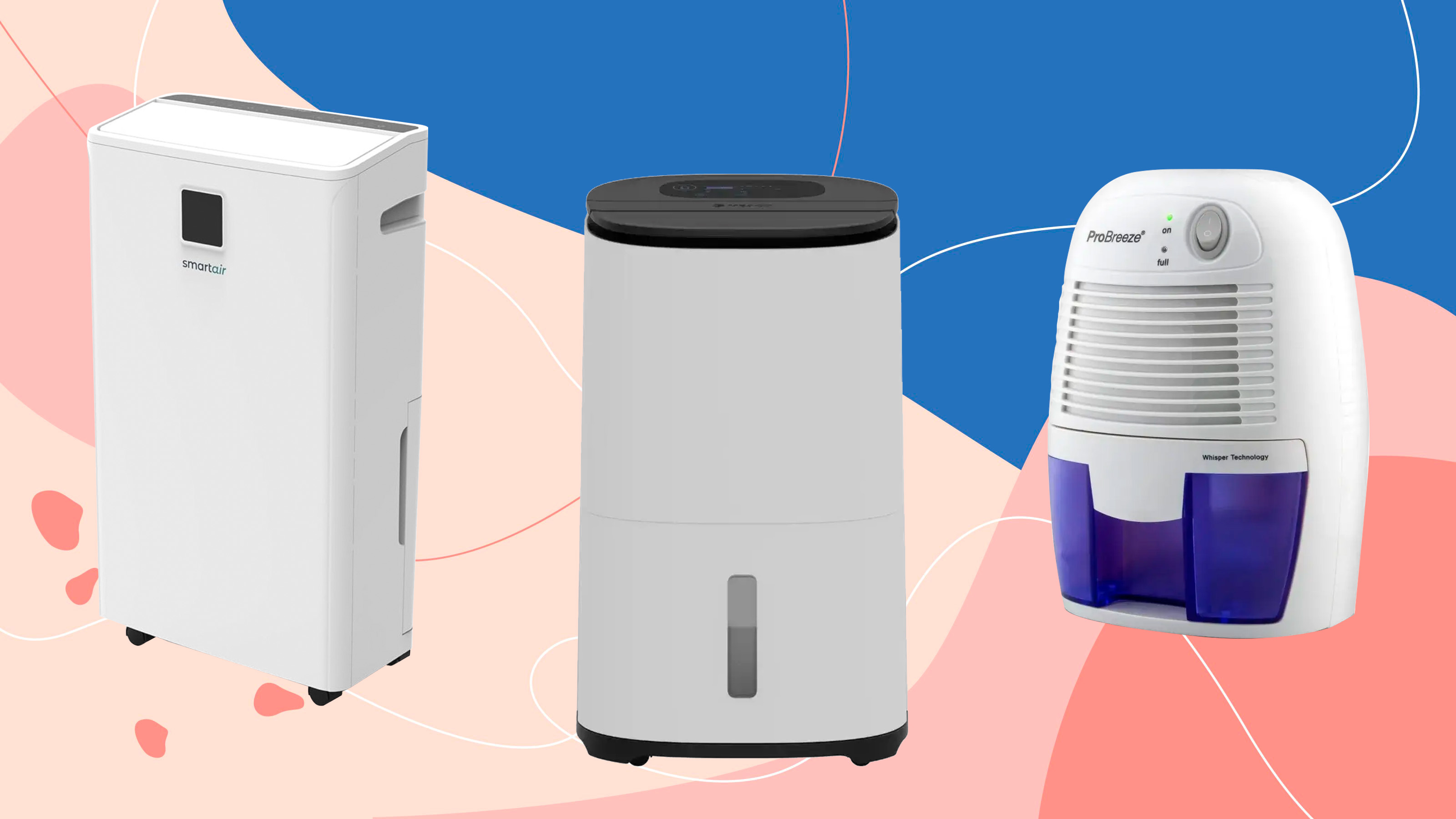
This guide was updated on 26/12/2025 to include deals on our top-rated dehumidifiers.
Utilising one of the best dehumidifiers can offer a simple and reliable solution to the build-up of damp, mould, and condensation in your home, and it can even speed up the drying process of wet clothes, especially during the colder, wetter months. That’s because these handy contraptions extract excess moisture from the air to maintain the ideal humidity level you need to live comfortably in your house.
However, just as buying one of the best air purifiers can leave you scratching your head, buying a dehumidifier can also be a minefield. You might spend days or even weeks trying to decode exactly what extraction rates, desiccant vs compressor, tank capacity, and laundry modes really mean and how they suit your needs and requirements. And as someone who likes to get as much bang for my buck, I'd hate for you to spend your money on a dehumidifier that doesn't quite work for your home.
That's why I and a team of certified experts have spent months following Ideal Home's dehumidifier testing process, testing some of the bestselling dehumidifiers on the market and lesser-known products, all offering a solution to excess moisture. We’ve evaluated everything you need to know about them, from how well they tackle damp to how much they cost to run and what size homes they'd suit. With this information at hand, I’ve been able to narrow them down to my top 6 best dehumidifier picks.
Dehumidifier Boxing Day deals
This compact, powerful unit with five modes and a 5.5L tank extracts up to 20L of moisture per day and is our best dehumidifier for drying clothes. It isn't as low a price as it was in the Black Friday sale, but it is currently one of the rare dehumidifiers with £70 off right now.
We rate this Pro Breeze model for its brilliant extraction rate, ease of use and effectiveness at drying clothes indoors. And you can snap it up for £100 off right now from ProBreeze
The quick list
Short on time? This quick list is an overview of the very best dehumidifiers we've tested. You'll find more information on each dehumidifier and why our testers recommend it if you keep on scrolling.
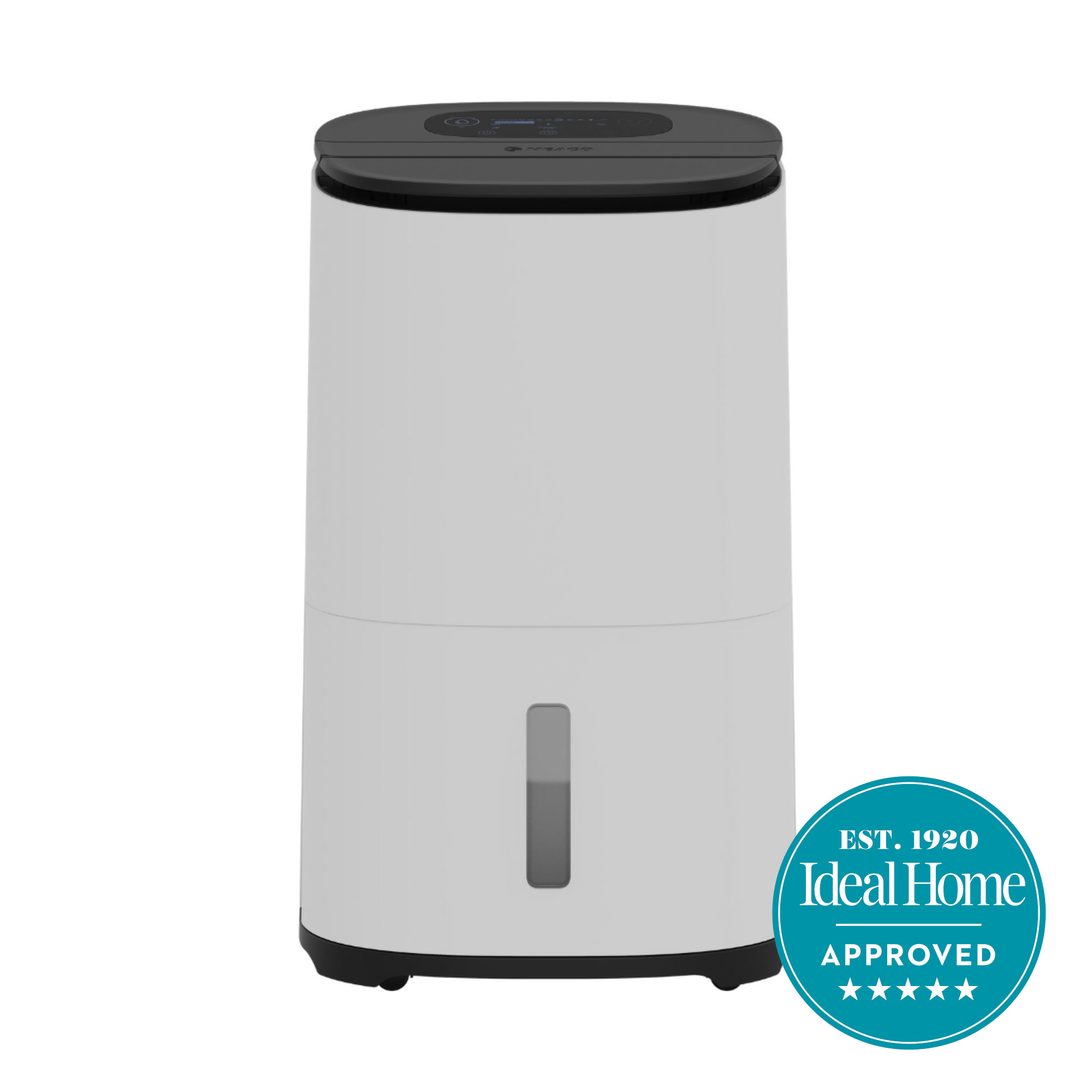
Best dehumidifier overall
The best dehumidifier we've tested, the MeacoDry Arete Two, is quiet, easy to use, works superbly and is very energy-efficient compared to other compressor dehumidifiers. The Arete Two is an impressive step-up from its predecessor, now complete with a timer, Wi-Fi connectivity and Smart capabilities which the Arete One previously lacked. Plus, its Smart Laundry Mode is brilliant at drying wet washing. It's also available in multiple sizes and offers built-in HEPA air purifiers.

Best budget dehumidifier
The Dryzone dehumidifier and air purifier is a compact two-in-one unit that tackles excess moisture while filtering out dust, allergens and pet dander with its HEPA filter in rooms up to 15m2. It comes with a 2.2 litre tank, extracts up to 12L of water per day, and has an auto shut-off feature that stops it when the tank is full - ideal for overnight use or when you're out.

Best desiccant dehumidifier
A desiccant dehumidifier differs from a compressor or Peltier dehumidifier in that it's more efficient at lower temperatures. The EcoAir DD1 Simple MK3 can be operated in any space that's above 1°C, making it a great option for a garage, basement, or unheated rooms during the winter months. In our tests, it also performed brilliantly in normal conditions, making quick work of drying wet washing. The only downside is its price and higher running costs.
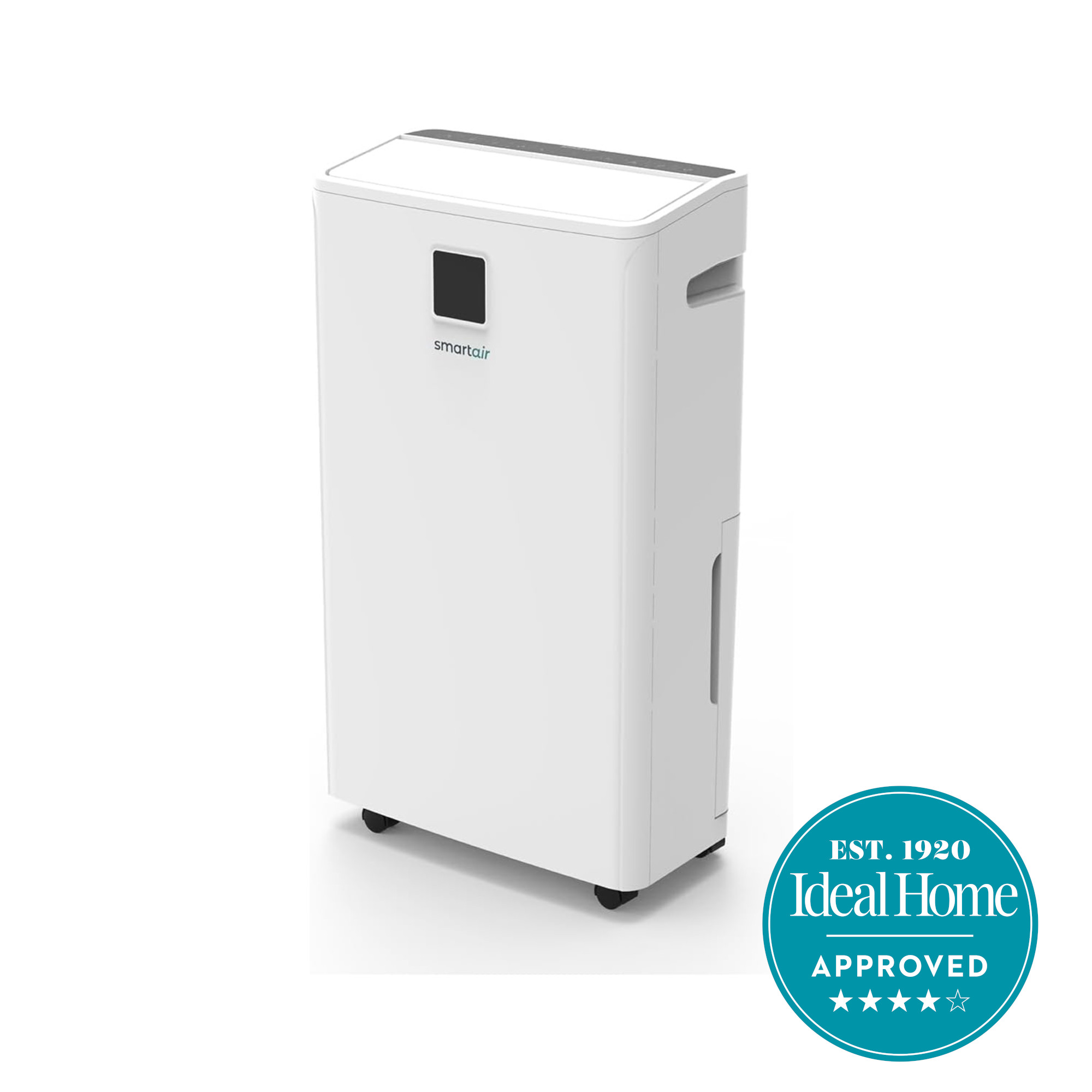
Best dehumidifier for drying clothes
The SmartAir Dry Zone Dehumidifier is a compact, powerful unit with five modes and a 5.5L tank, extracting up to 20L of moisture per day. It’s quiet, energy-efficient (11p an hour), and reduced humidity from 60% to 48% in six hours. Senior Digital Editor, Jenny McFarlane, found that it dried her laundry in four hours and includes handy features like sleep mode. Its only downside is the lack of WiFi, so there are no remote alerts when the tank is full.
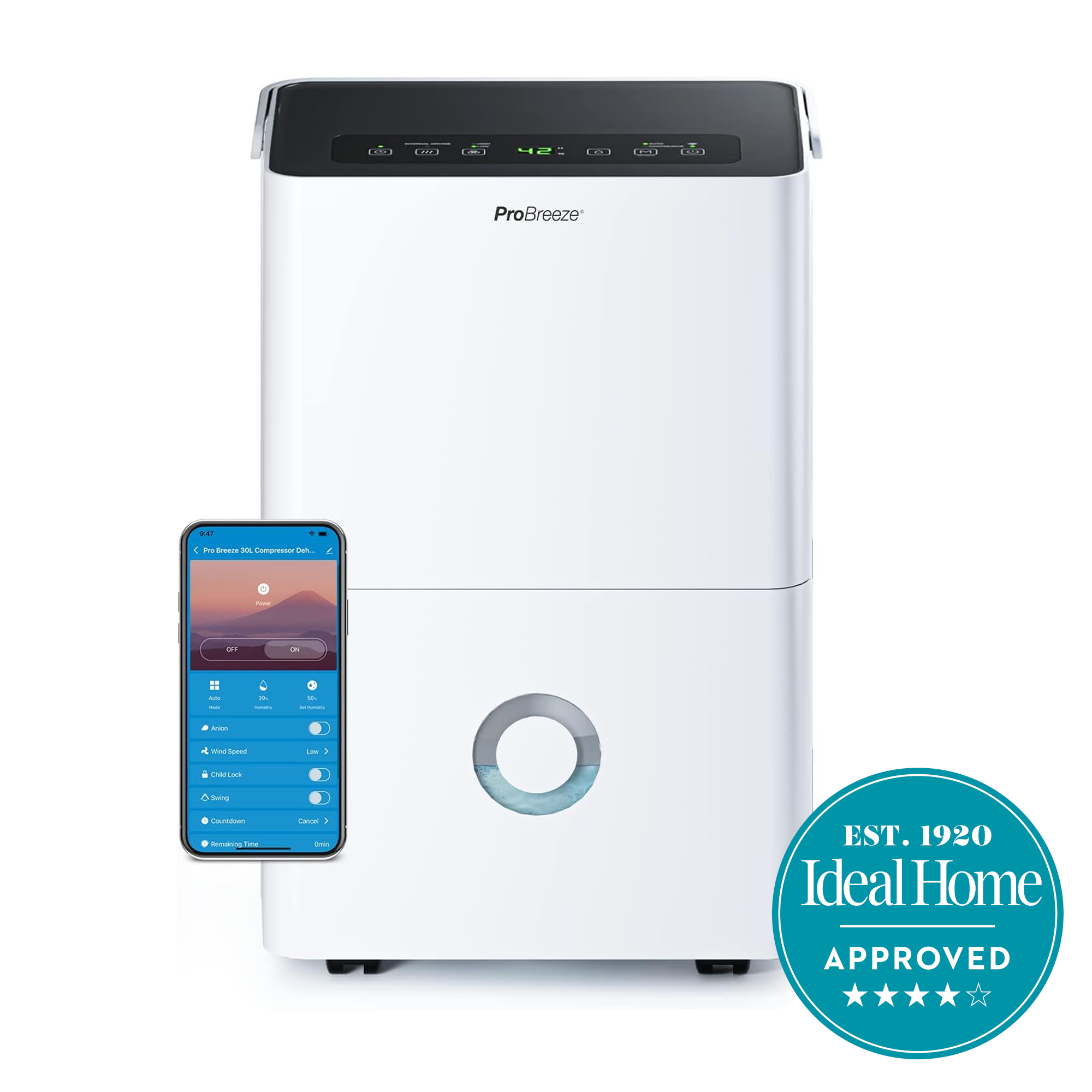
High-capacity dehumidifier
This dehumidifier can extract up to 30L of moisture from the air per day, giving it one of the highest extraction rates on the market. That makes it a good choice if you have high moisture levels to deal with, plus its decent-sized 4L water tank means you won't be emptying it continually. Wi-Fi connectivity and voice-activated control are a great addition.
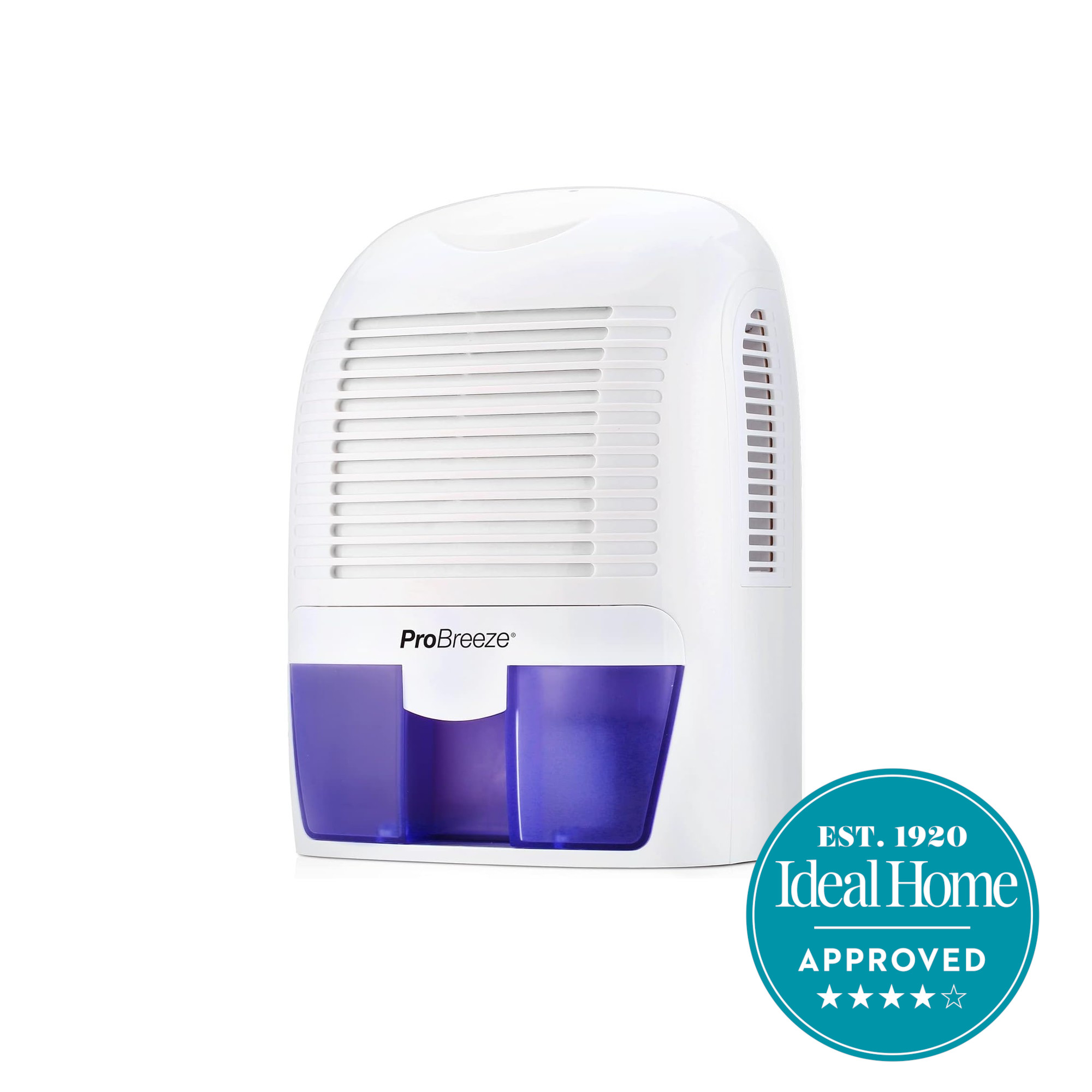
Best dehumidifier under £100
Small, affordable, super quiet, and with low running costs of just 1p per hour, this is a budget-friendly option for minor moisture problems. Its Peltier condenser has a much lower extraction rate than most compressor dehumidifiers, so don't expect powerful performance, but its compact build means it can be tucked easily away on a shelf, bedside table, or windowsill to help reduce condensation.
Best dehumidifiers – tried and tested by the IH experts
Best dehumidifier overall
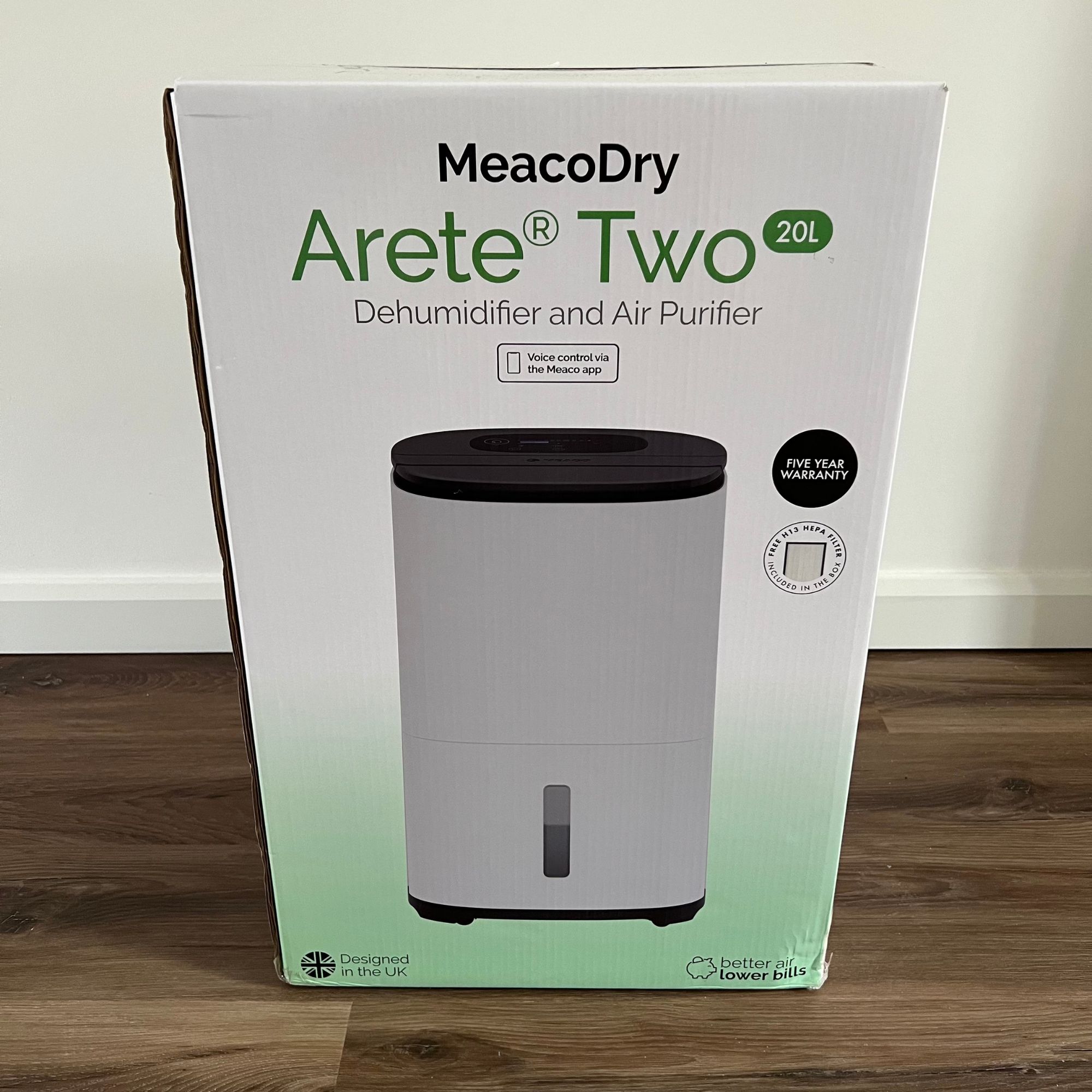

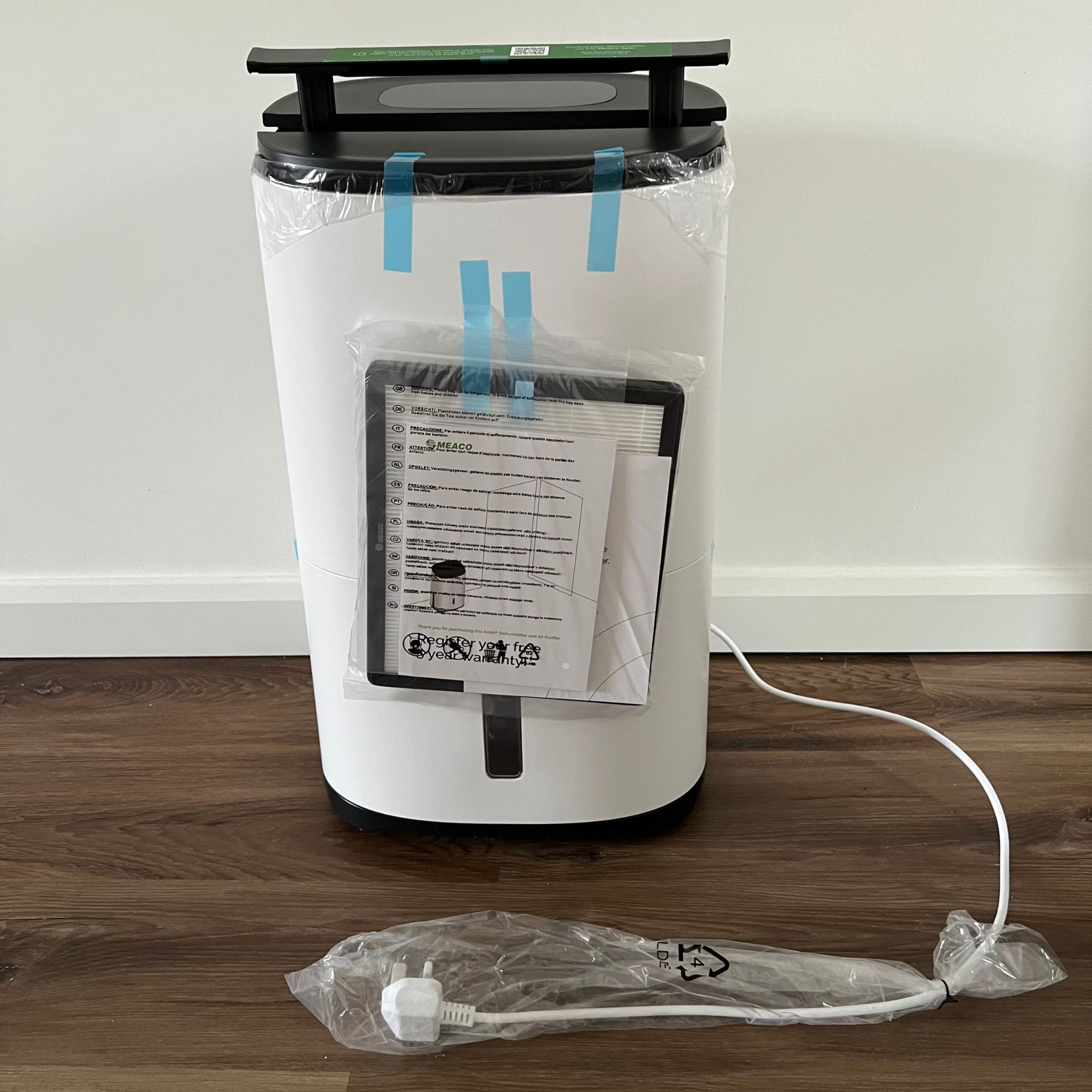
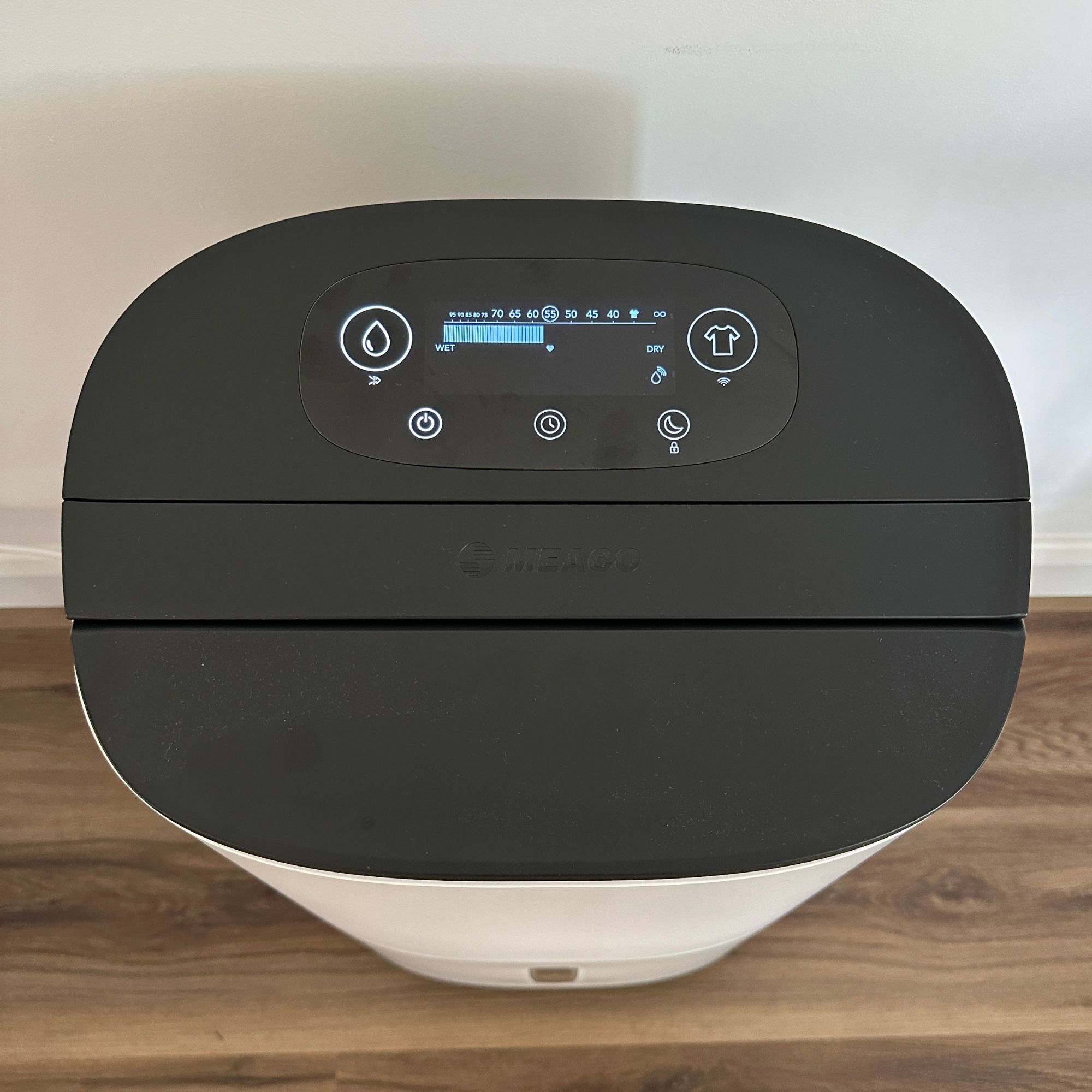
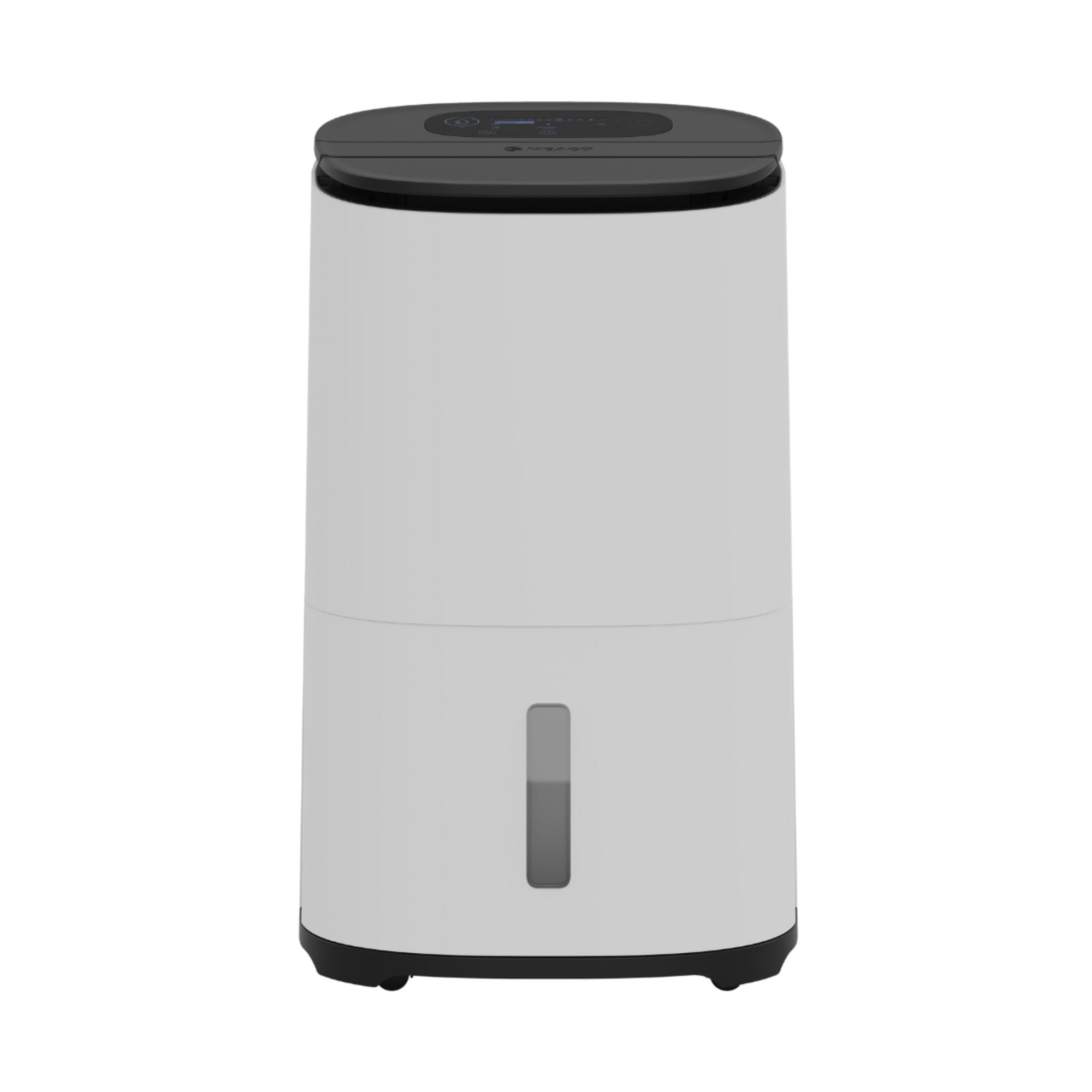
Specifications
Reasons to buy
Reasons to avoid
After testing multiple models for this guide, the MeacoDry Arete Two dehumidifier has officially taken the crown as the best dehumidifier overall, replacing its predecessor, the MeacoDry Arete One. It builds on everything that made the original so popular, while introducing genuinely useful upgrades that elevate everyday use.
In terms of build quality, the Arete Two feels reassuringly solid and premium. The biggest changes are visual and functional. A new LCD 'chase' display that gives clearer feedback and control, plus an adjustable louvre that allows you to direct airflow exactly where it's needed. In use, it's impressively quiet, simple to operate and remains one of the most energy-efficient compressor dehumidifiers we've tested. It also includes a built-in HEPA filter, meaning it helps improve indoor air quality as well as remove excess moisture.
The automatic Smart Humidity mode makes the Arete Two largely hands-off. It switches on when moisture levels rise and powers down once the target humidity is reached. During testing, it reduced damp levels in problem rooms very quickly, collecting a surprising amount of water in just 24 to 48 hours. The Smart laundry mode is equally effective, drying clothes in hours rather than the days it can take a typical terraced home.
One of the main gripes of the Arete One was the lack of smart features, and the Arete Two fully resolves this. It now offers app control, a one-to-24-hour timer, and compatibility with Alexa and Google Assistant. Available in 10L, 12L, 20L and 25L capacities, there's a size to suit every home, all with best-in-class efficiency and low running costs.
Read the MeacoDry Arete Two Dehumidifier review for more details.
Best affordable dehumidifier
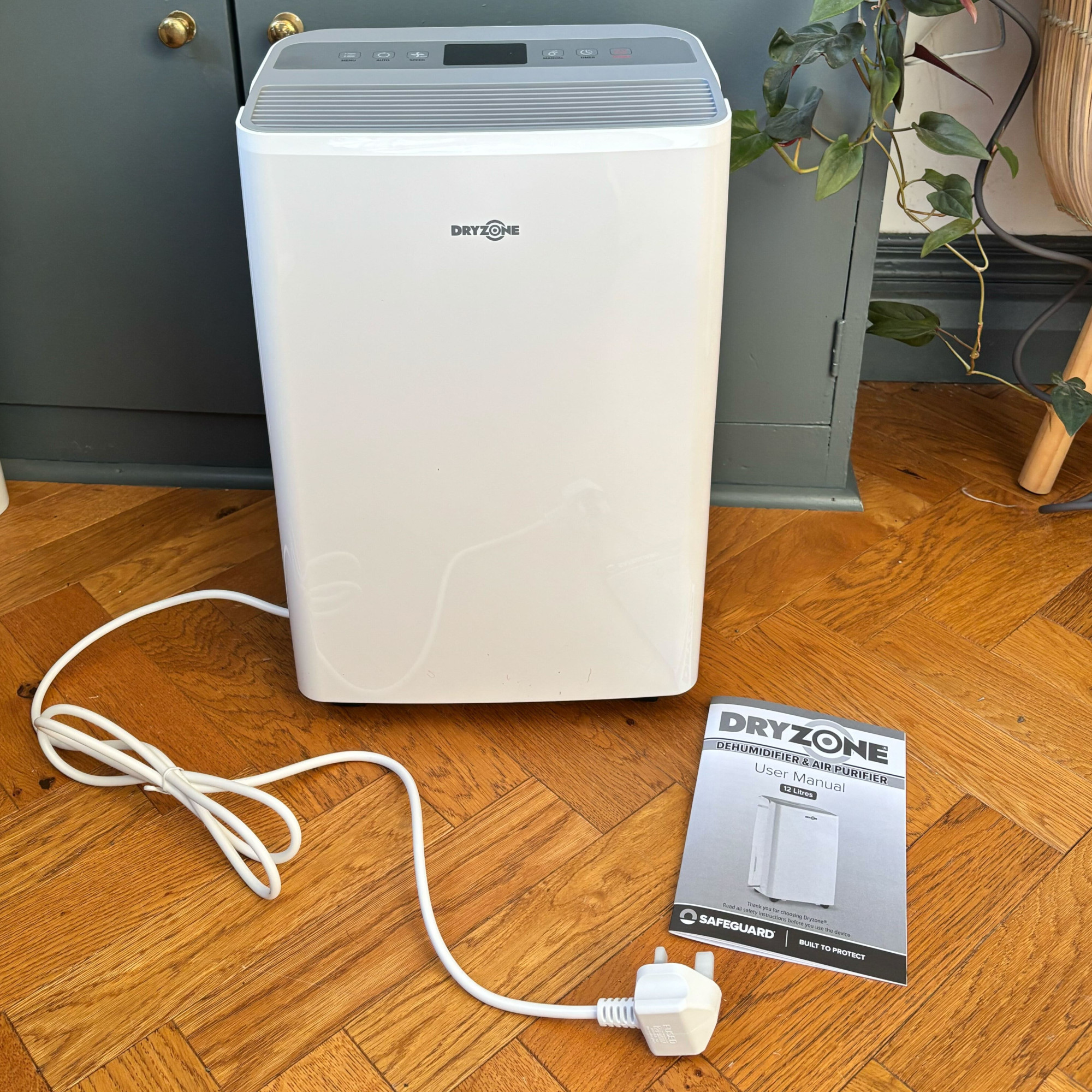



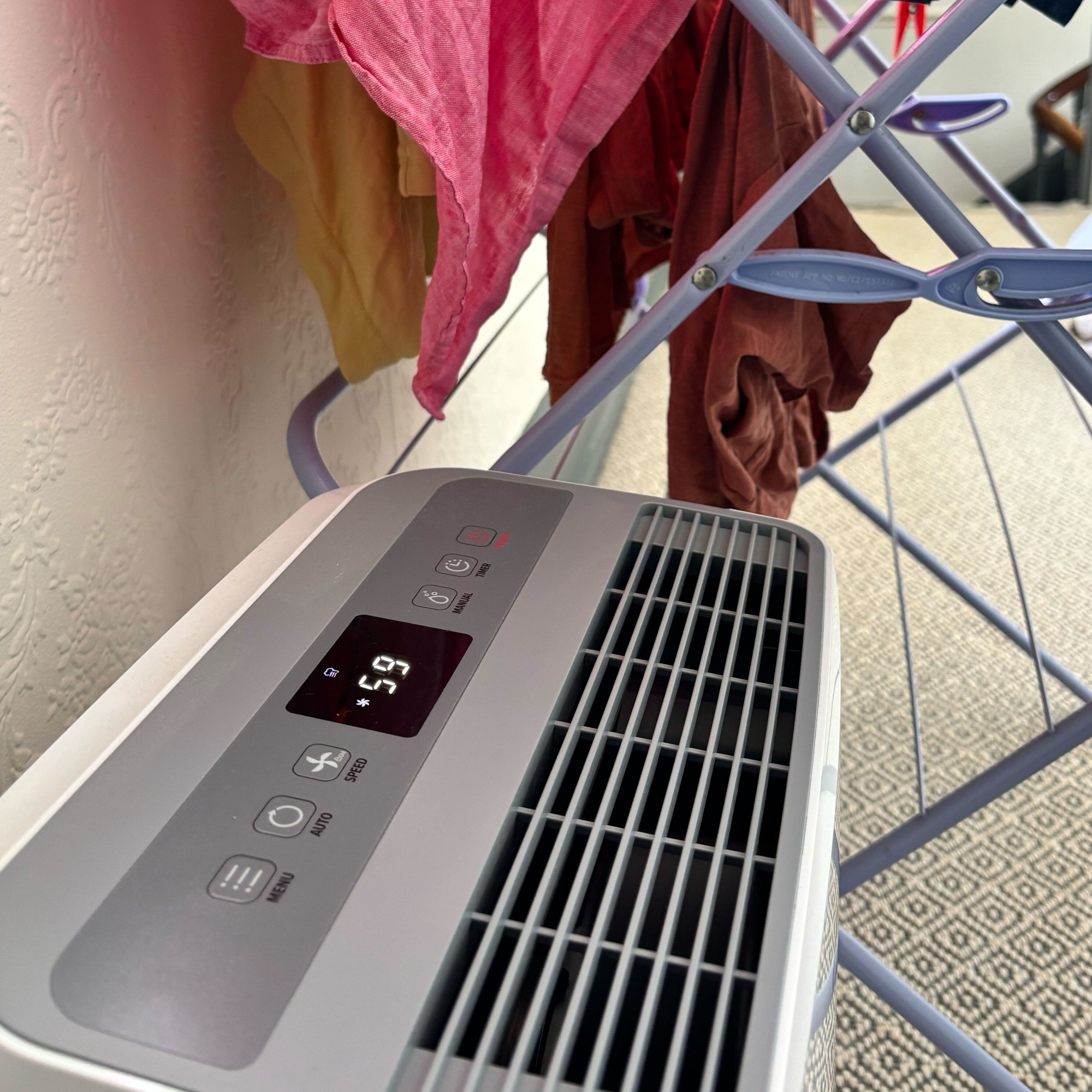

Specifications
Reasons to buy
Reasons to avoid
The Dryzone dehumidifier and air purifier is a compact, budget-friendly 2-in-1 option that I rate highly as the best affordable dehumidifier for smaller rooms to tackle damp and stuffy air. It combines a 2.2 litre water tank with the ability to extract up to 12 litres of moisture a day, while its medical-grade HEPA filter helps to remove allergens and dust.
Running quietly at 36dB and at a mere 4p per hour (based on January '25 price cap), it's designed to be fuss-free, with simple controls and unnecessary tech. And it's surprisingly effective for its size. While testing, humidity levels were noticeably reduced in just a few hours, and it works well at speeding up drying laundry indoors. Maybe not as effective as a more premium unit like the Pro Breeze 20L Premium Dehumidifier with Special Laundry Mode, but it does the job well.
Odours, such as lingering paint smells after decorating, are also cut down, leaving rooms feeling fresher and more comfortable. Lightweight and mounted on wheels, it's easy to move around the house, though the water tank design could be a little easier to carry.
Overall, it's a practical, good-value solution for everyday homes where damp is a real issue. While it can't replace a full-sized air purifier like our top pick, the Blueair Blue Max 3250i Air Purifier or a high-capacity dehumidifier like our top recommendation, the MeacoDry Arete Two Dehumidifier, the dual function, portability and low running costs make it a smart choice for small spaces that need a boost in both air quality and comfort.
Read the full Dryzone dehumidifier and air purifier review for more details.
Best desiccant dehumidifier
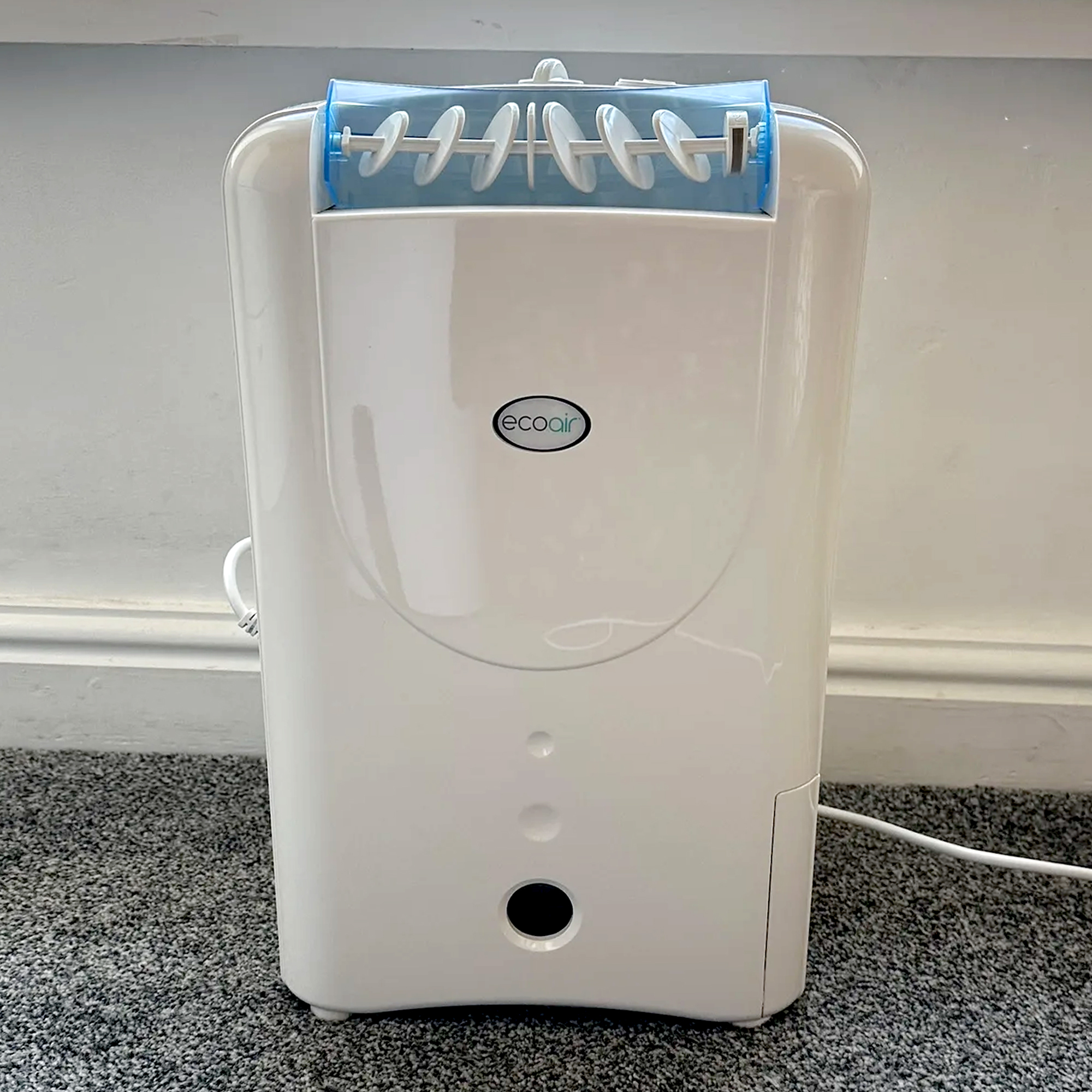
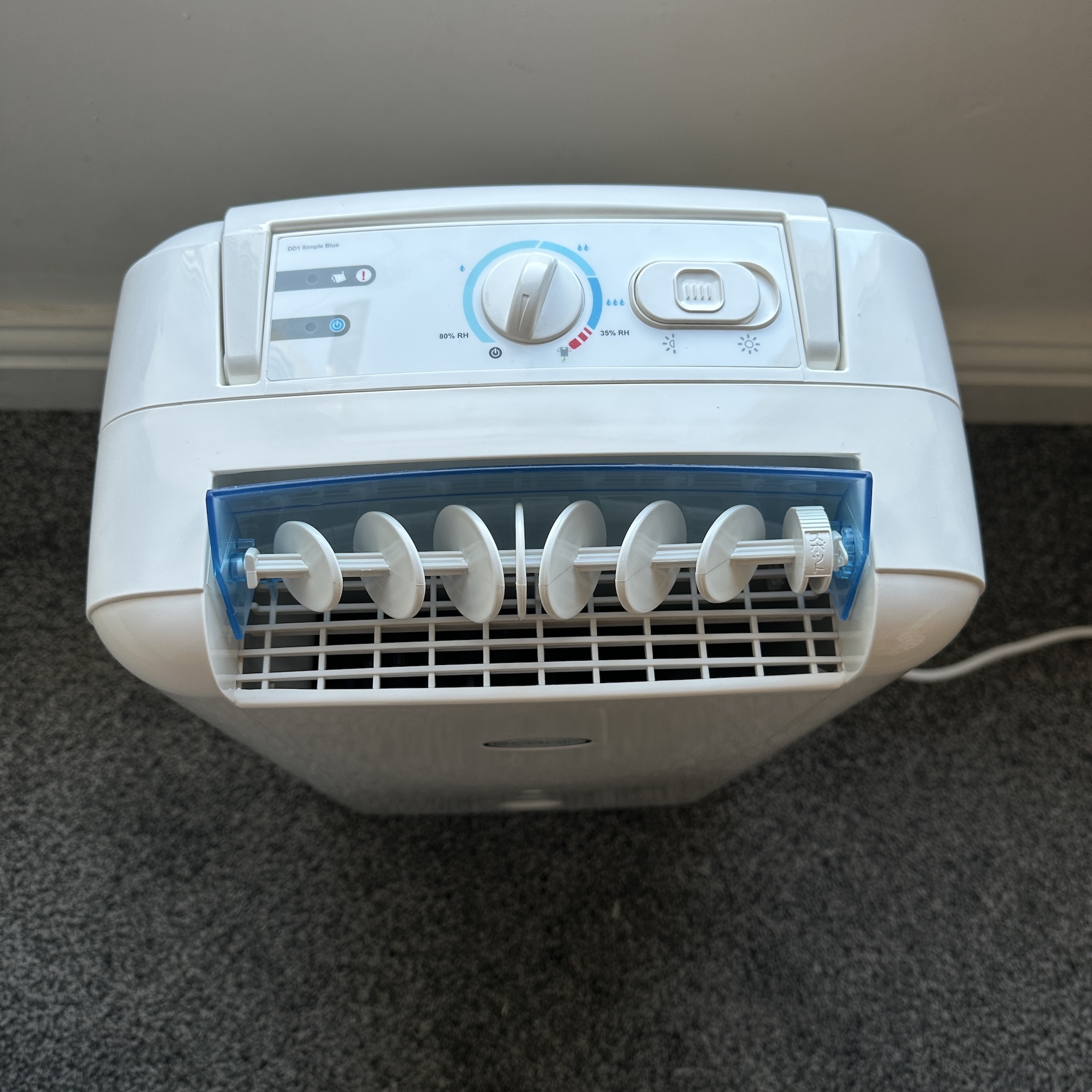
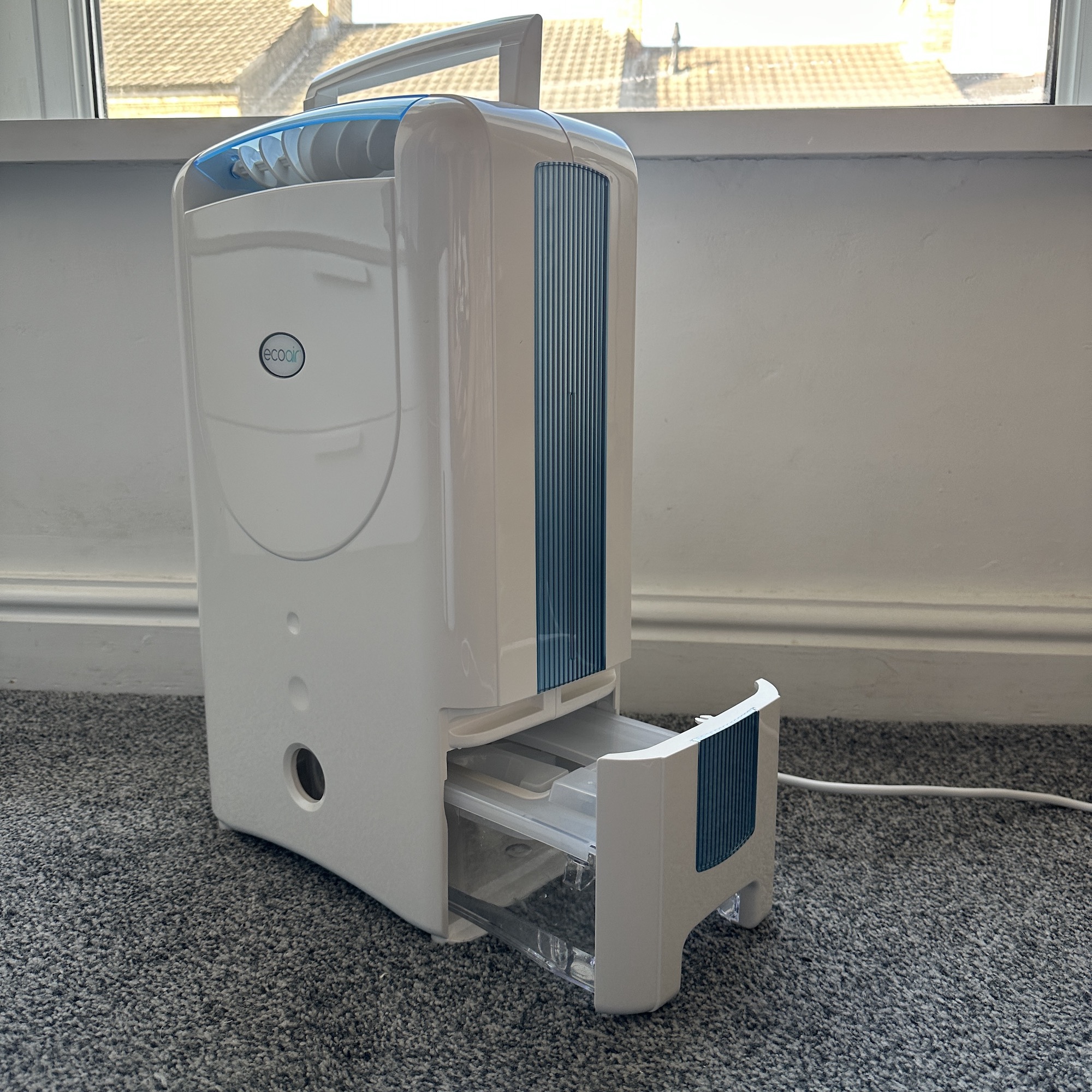
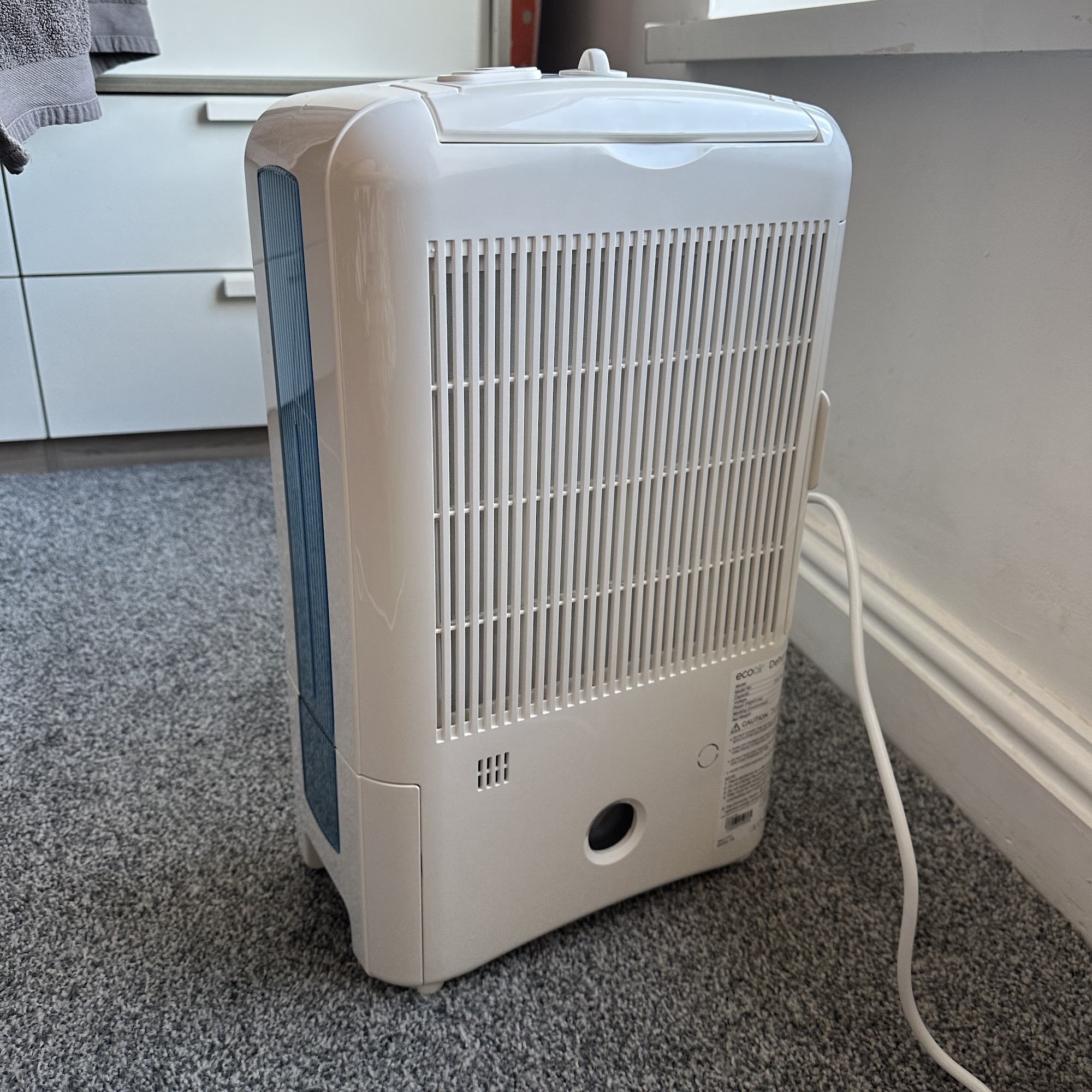

Specifications
Reasons to buy
Reasons to avoid
Unlike compressor dehumidifiers, which pass air over a cold coil to condense moisture, dessicant dehumidifiers use a moisture-absorbing chemical. This makes them far more effective in cold conditions, as compressor and Peltier models can struggle once temperatures drop below 5°c.
The EcoAir DD1 Simple MK3 Dehumidifier is designed specifically for these environments, extracting up to 7.5 litres of moisture per day in temperatures as low as 1ºc. That makes it a practical choice for conservatories, basements, garages and other unheated spaces during winter. In our tests, it also performed well in everyday use, quickly reducing humidity levels and speeding up laundry drying.
This is helped by the warm air it releases while running. EcoAir says dessicant dehumidifiers typically emit air that's around 3-5 degrees Celsius warmer than the surrounding room temperature, which makes them particularly effective for drying clothes indoors compared to compressor models.
As its name suggests, the Simple MK3 is easy to set up and operate, with straightforward manual controls and no complicated settings to navigate. However, for the price, the design feels basic, compared to models like the SmartAir Dry Zone Dehumidifier, and it lacks the refinement, energy efficiency and smart features found on models like the MeacoDry Arete Two. The Arete Two's Smart Humidity mode, in particular, allows hands-off humidity control while keeping running costs low.
Running costs for the EcoAir's biggest downside. Using 300-580W, it costs roughly 9p-17p per hour to run at current energy prices, compared to around 3p per hour for the more efficient MeacoDry Arete Two. That said, if you need reliable dehumidification in cold spaces, the EcoAir DD1 Simple MK3's 1ºc operating temperature is hard to beat.
Read the full EcoAir DD1 Simple MK3 Dehumidifier review for more details.
Best dehumidifier for drying clothes


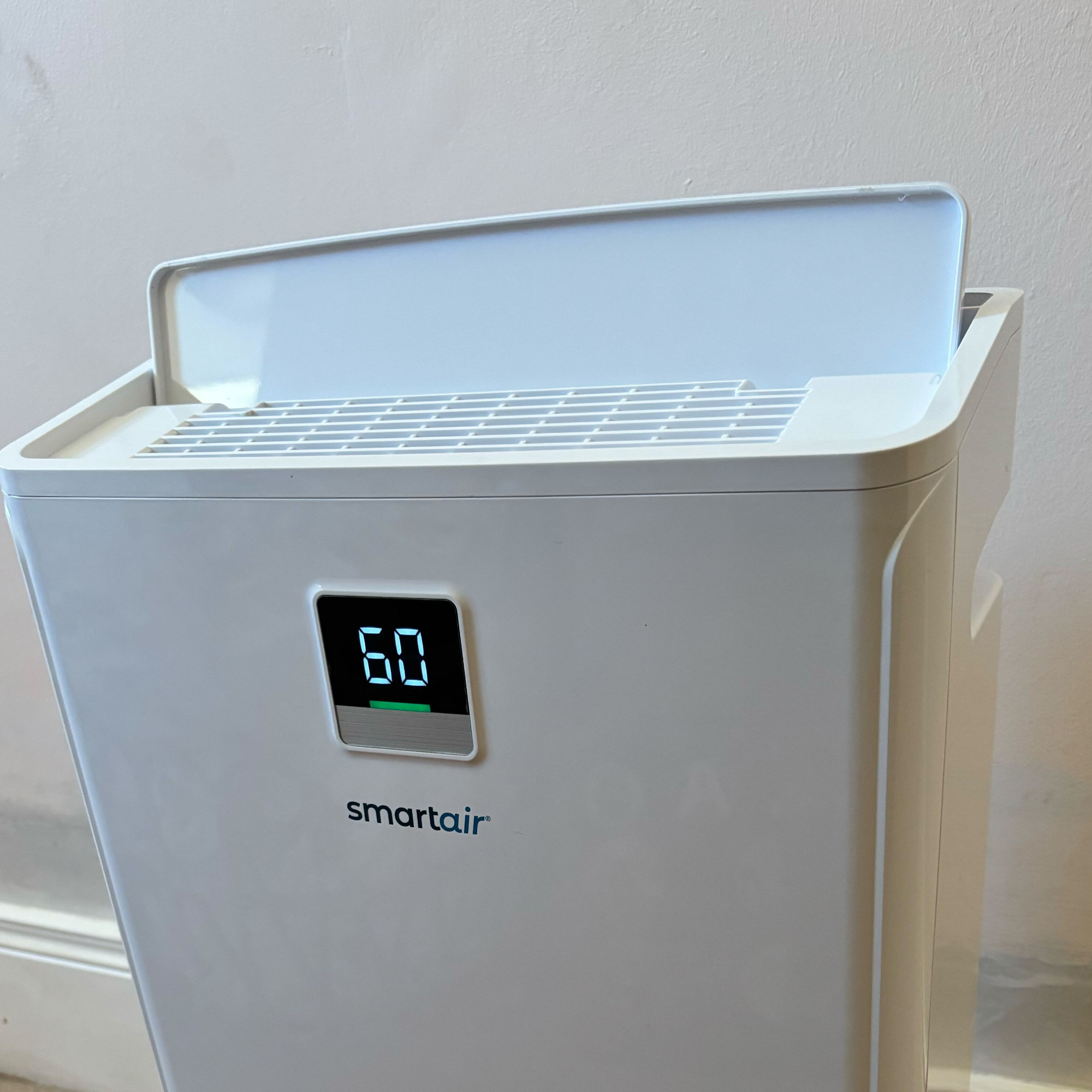


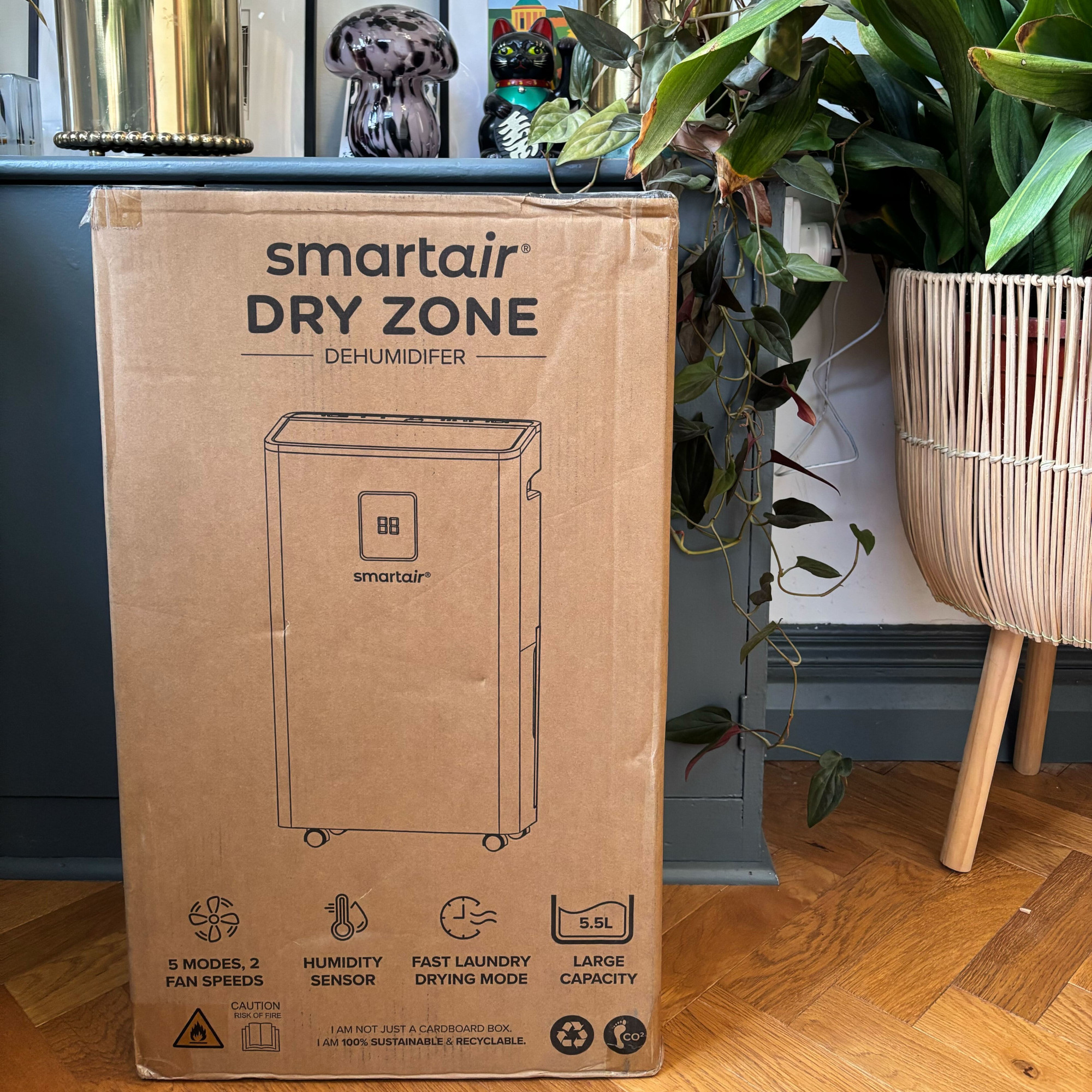


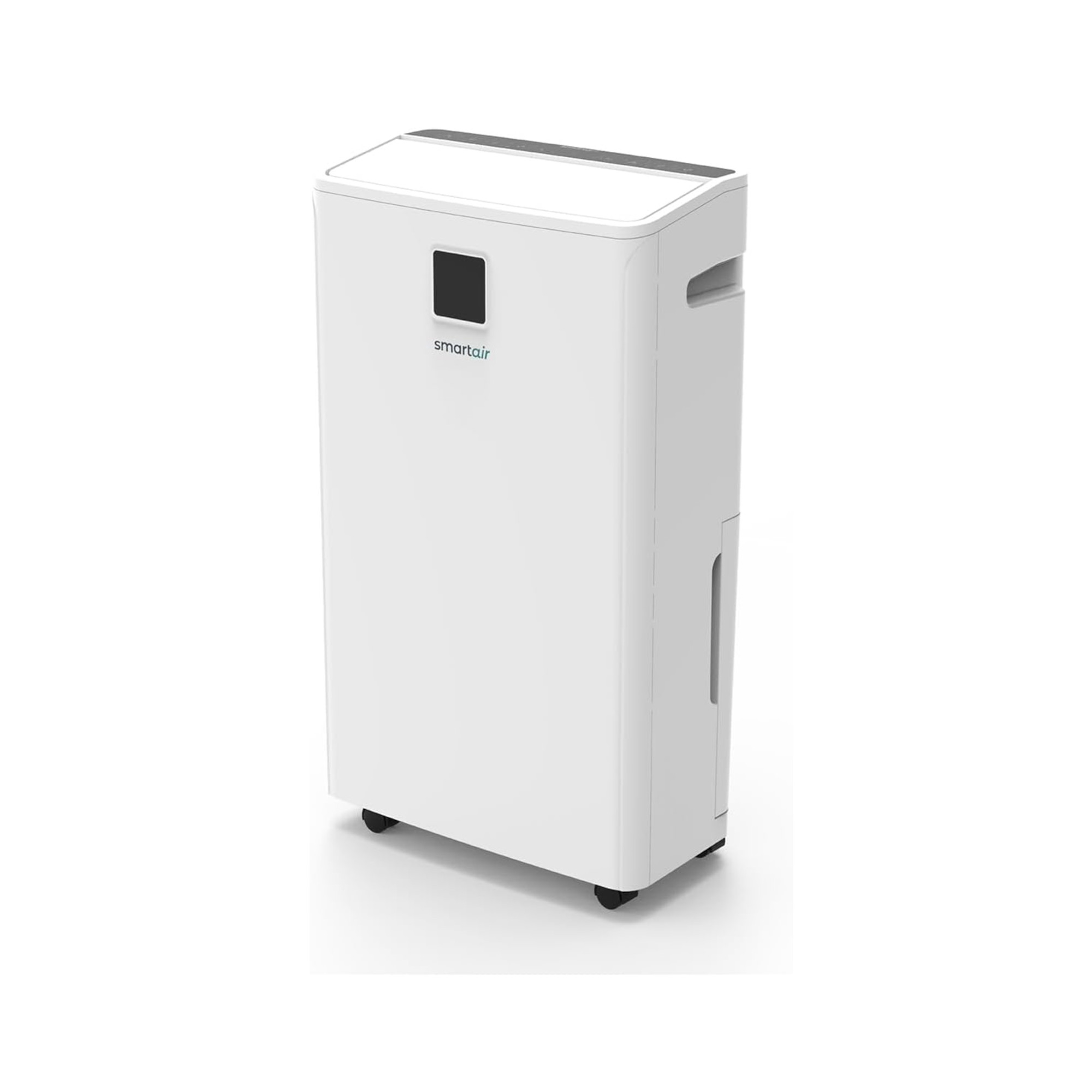
Specifications
Reasons to buy
Reasons to avoid
With five operating modes, a generous 5.5L water tank, and the ability to extract 20 litres of moisture per day, the SmartAir Dry Zone Dehumidifier impressed me with its relatively compact design that delivers. I found it quiet, energy-efficient (just 11p an hour to run), and easy to move between rooms.
It's quickly become a go-to in my home, especially when it comes to tackling laundry and reducing dampness in the air. In testing, it dropped the humidity in one room from 60% to 48% in six hours and dried a full load of washing in just four hours using the smart laundry mode. I initially used it alongside a heated clothes airer, which is an essential setup in my family home, and the results were excellent, drying clothes in four hours.
The generous tank means less emptying, and features like sleep mode make it ideal for overnight use, which has a surprisingly quiet operation. The main downside is the lack of WiFi, so there’s no app control or full tank alerts, which some similarly priced models now include. At £249.99, it’s more expensive than some alternatives like our best dehumidifier, the MeacoDry Arete One 12L (£179.99) or one of our runners up, the ProBreeze 12L (£129.99), both of which offer similar energy-efficient performance.
But many budget models compromise on tank size, settings, or noise levels, and while pricier options may offer smart controls and air purifiers, those features aren’t always necessary. What the SmartAir Dry Zone gets right is its balance of power, simplicity, and portability, making it a strong contender for busy households that want fuss-free, reliable performance.
Read the full SmartAir Dry Zone Dehumidifier review for more detail.
High capacity dehumidifier
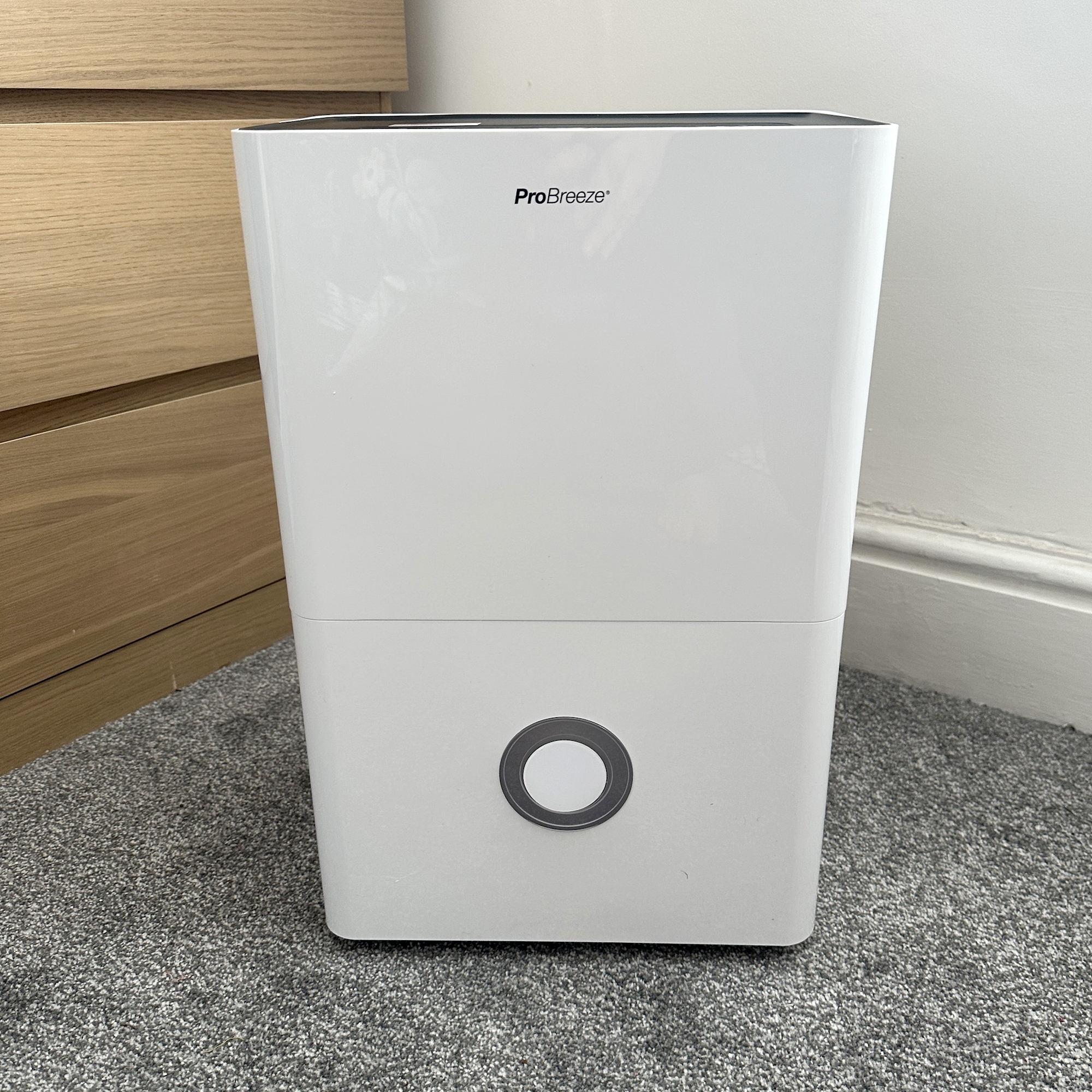
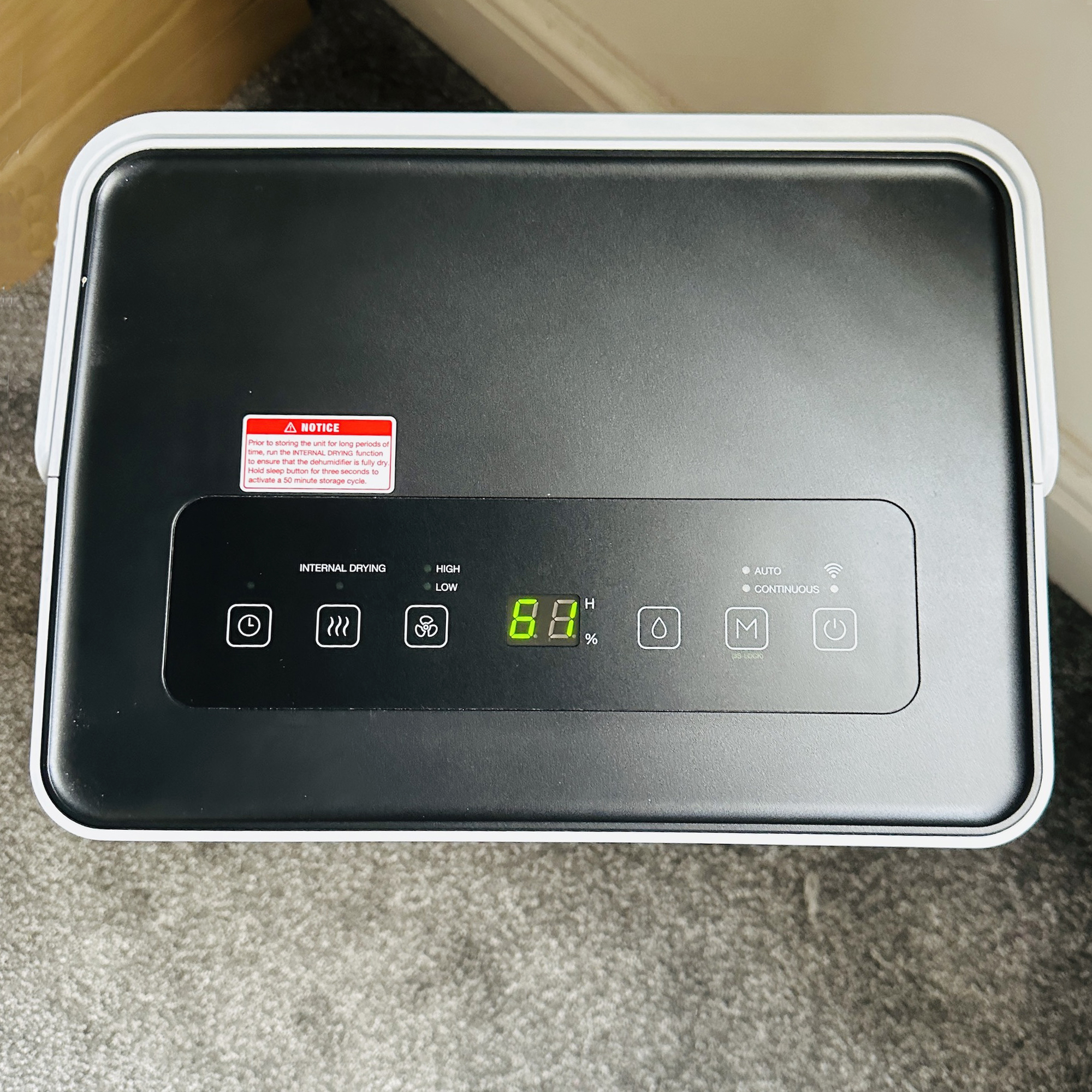
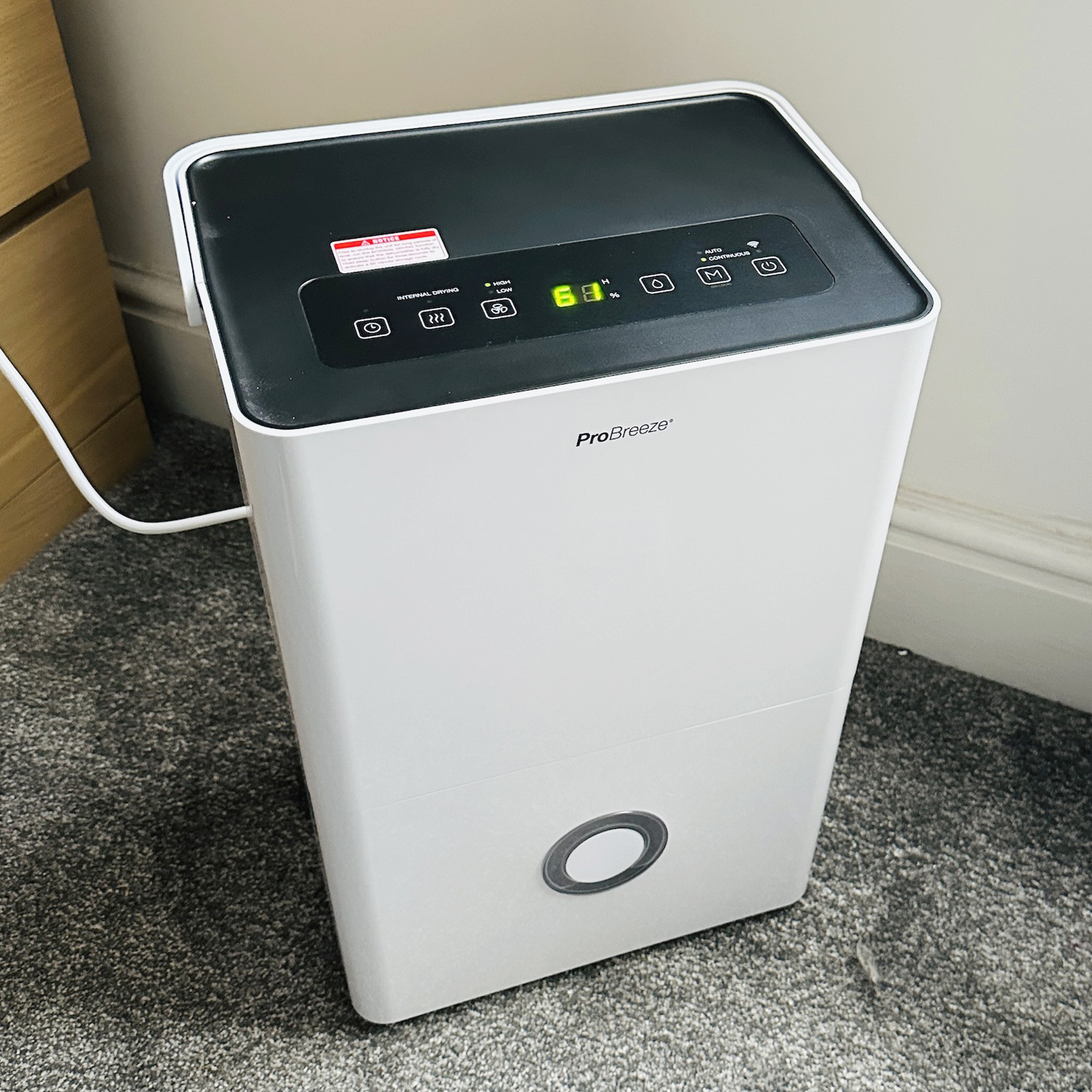
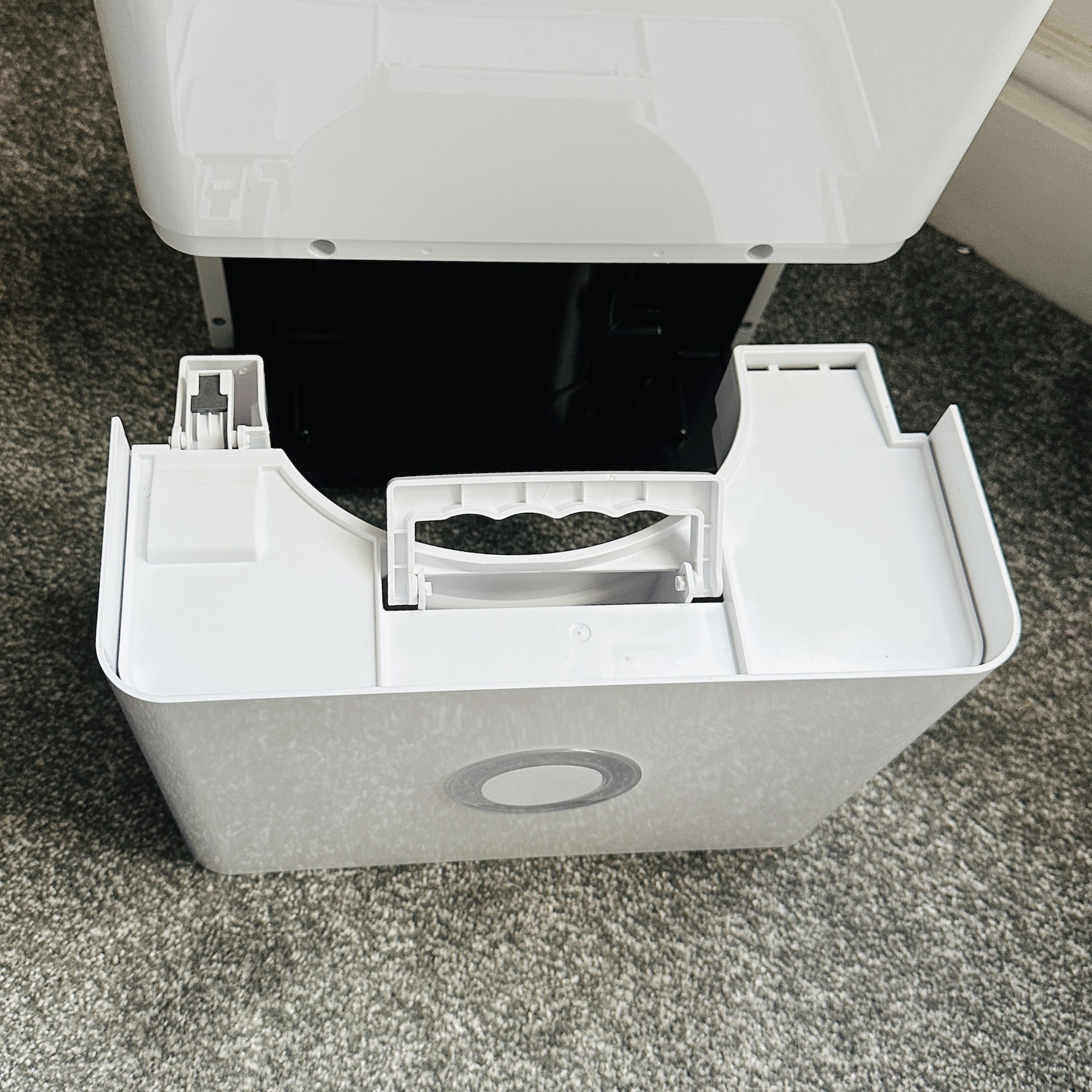

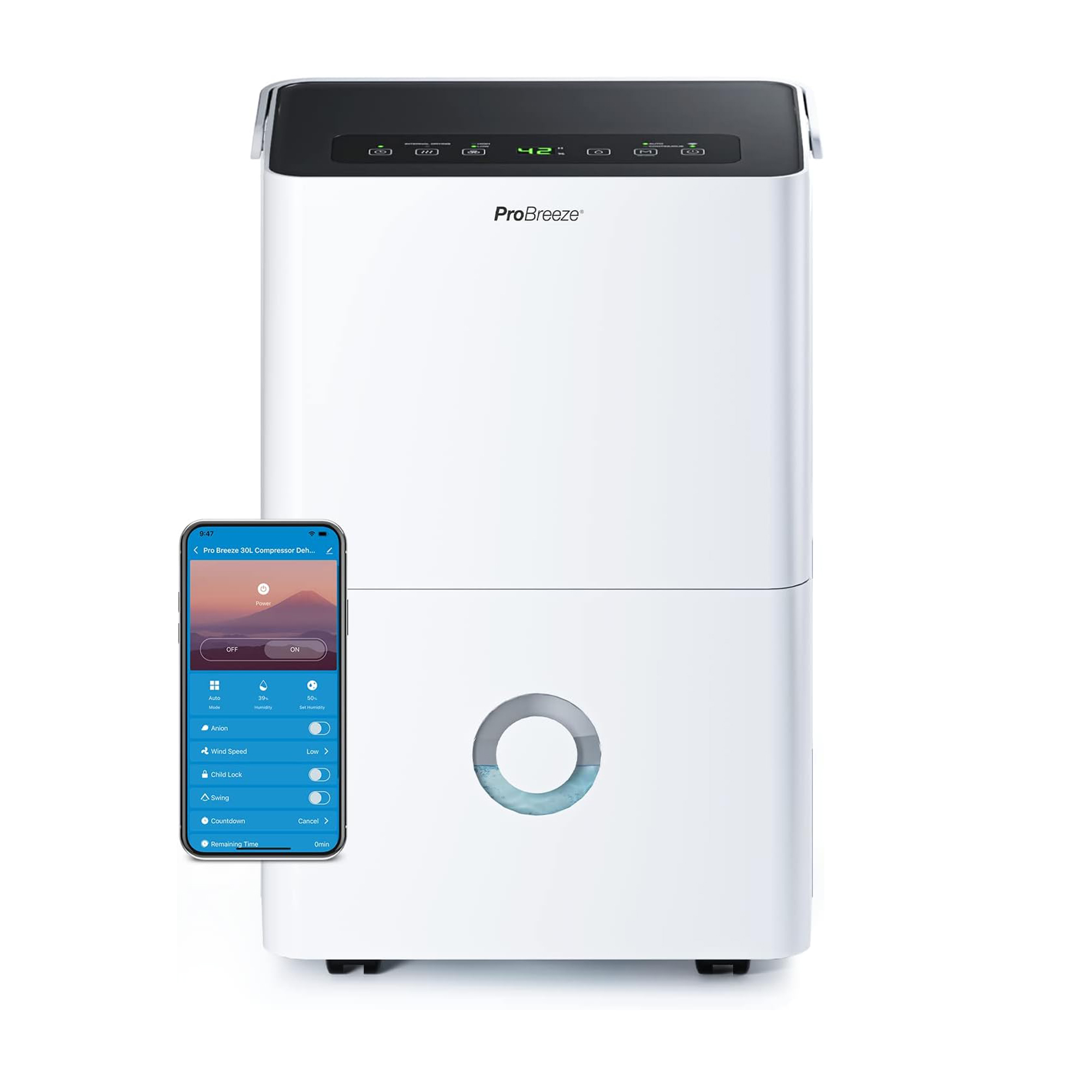
Specifications
Reasons to buy
Reasons to avoid
The Pro Breeze High Capacity Smart Dehumidifier is a powerful option, capable of extracting up to 30 litres of moisture per day, giving it one of the highest extraction rates on the market. That makes it well-suited to homes with serious damp issues or consistently high humidity.
One of its standout features is Smart App control. You can connect it to Wi-Fi and operate it remotely via the ProBreeze app, or link it to Alexa and other voice assistants. It also has a generous four-litre water tank and an automatic humidity sensor, allowing you to set your desired humidity level and let it run independently.
During testing, we found it very easy to operate, and our reviewer was particularly impressed by the app. The interface is clear, intuitive and makes changing settings simple. Alongside the Duux Bora Smart 20L Dehumidifier, this is one of only a small number of models currently offering both remote and voice-activated control.
Although it doesn't have a dedicated laundry drying mode, it still helped dry wet washing, just more slowly than models designed specifically for the task, such as the SmartAir Dry Zone Dehumidifier and Pro Breeze 20L Premium Dehumidifier with Special Laundry Mode.
Its biggest drawback is energyuse. At 600W, it consumes significantly more power than the 25L MeacoDry Arete Two Dehumidifier, which delivers only slightly lower extraction while using just 250W. Noise is another consideration. At 46dB, it's loud on both high and low fan settings, making it unsuitable for bedrooms or busy living spaces.
That said, if you need maximum moisture removal, the 30L extraction rate, large tank and smart connectivity make this a perfect choice for tackling high levels of moisture.
Read the full Pro Breeze 30L High Capacity Smart Dehumidifier review for more details.
Best dehumidifier under £100
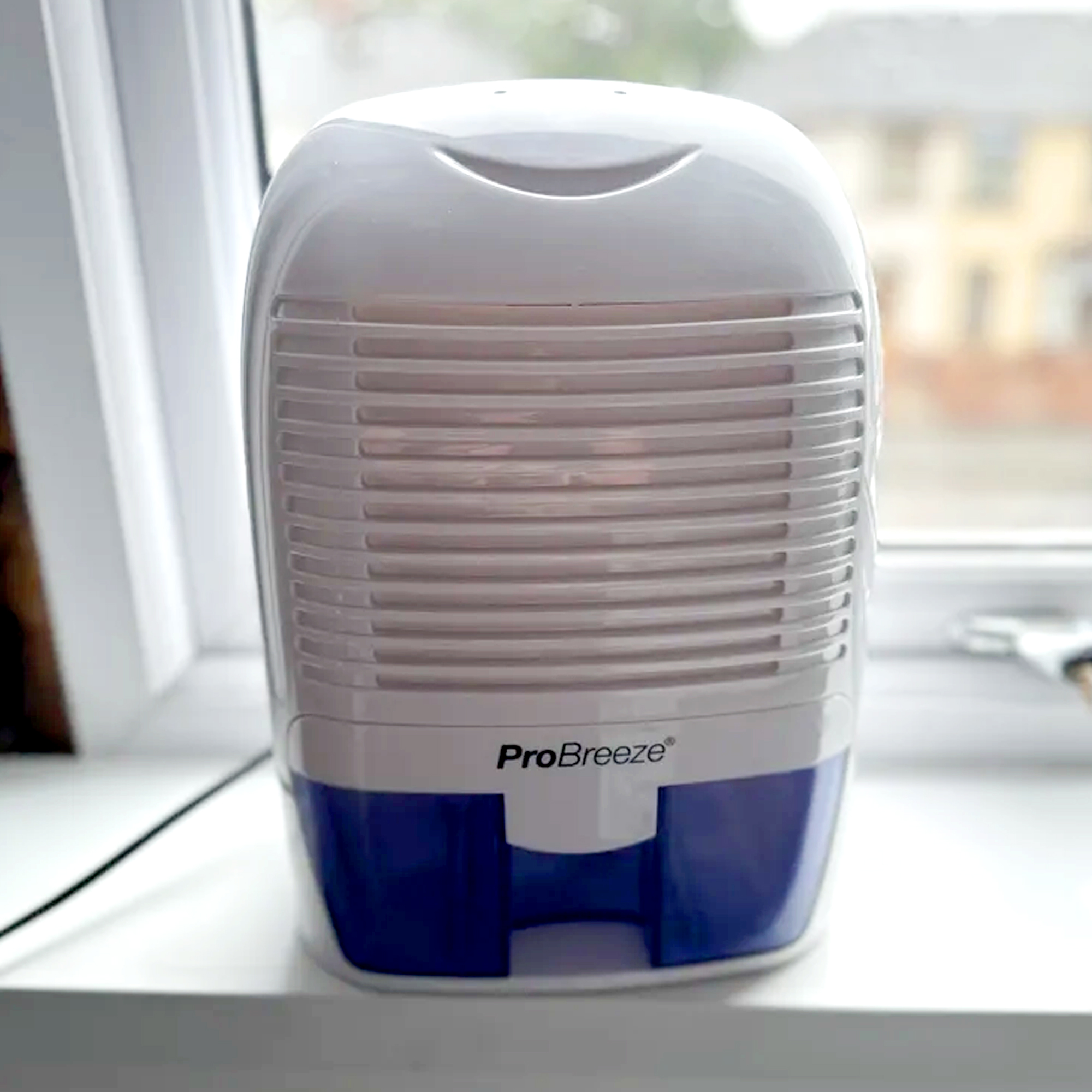
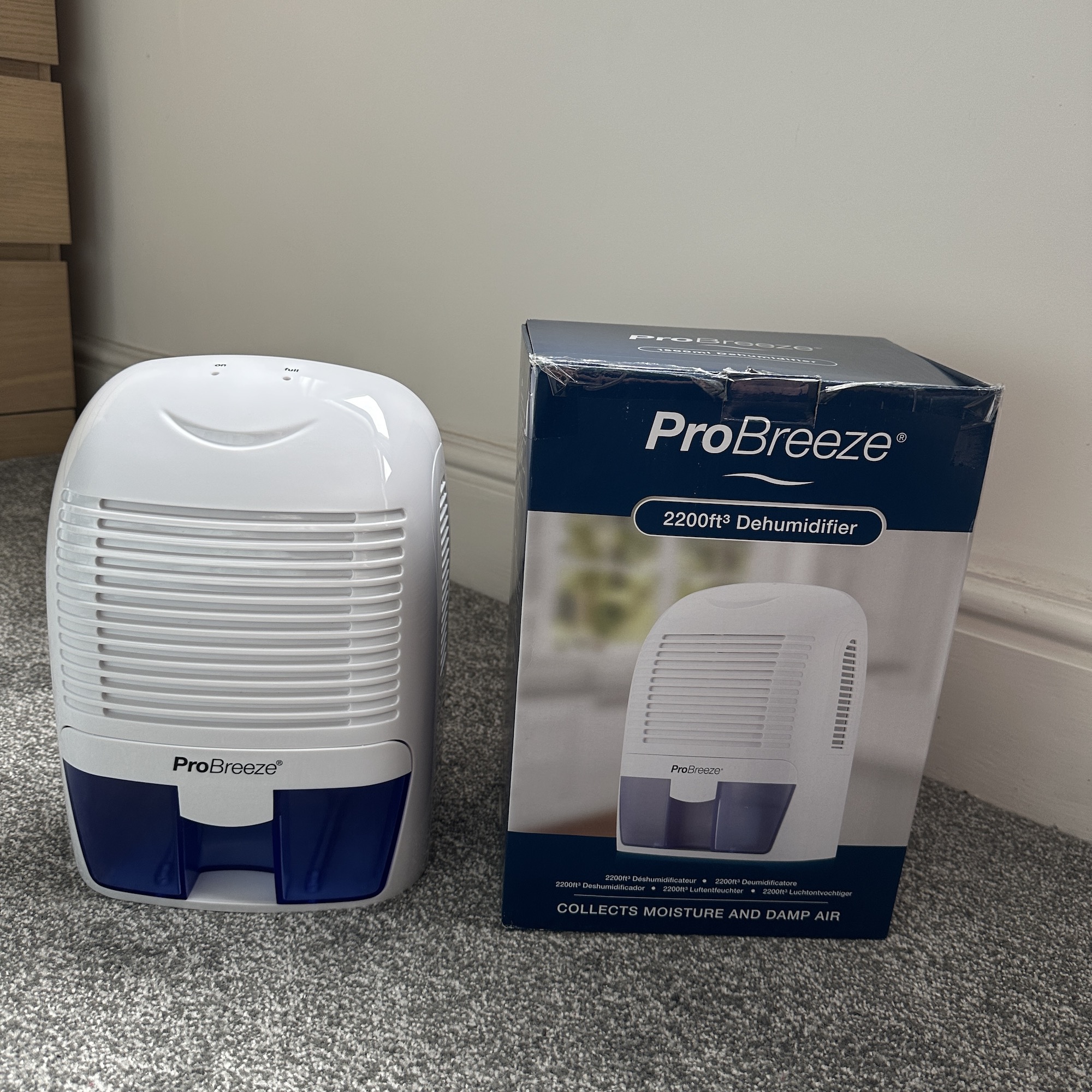
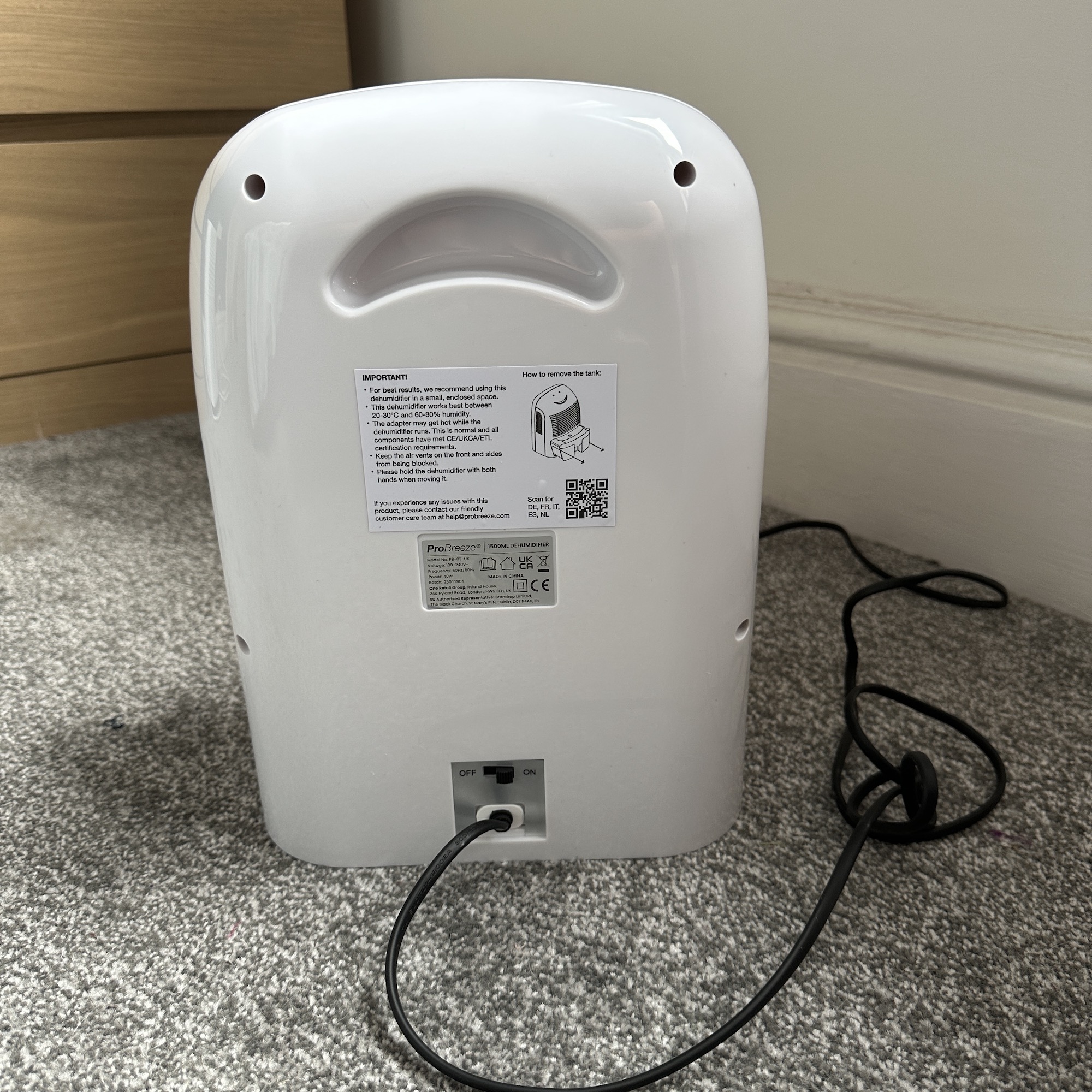
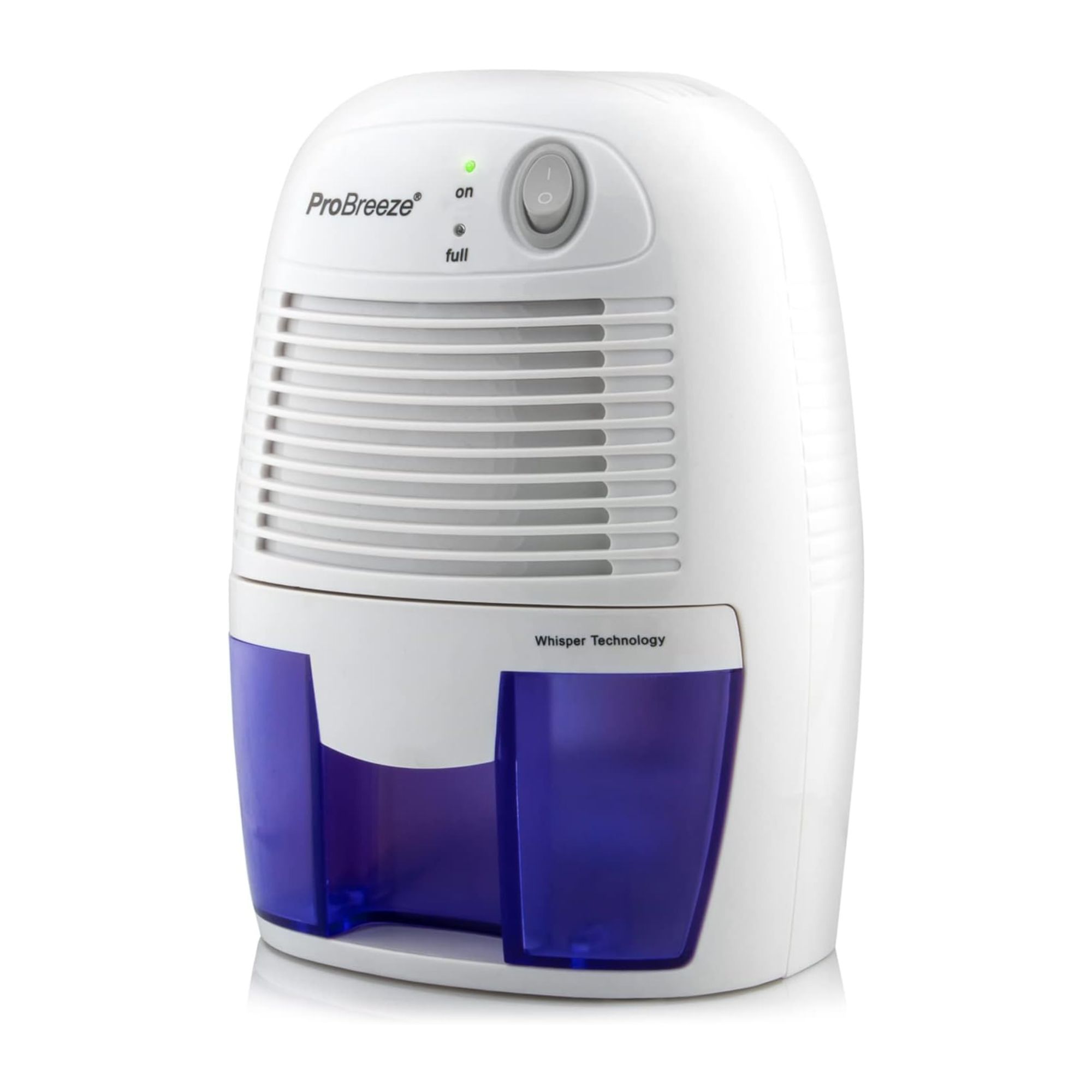
Specifications
Reasons to buy
Reasons to avoid
It's important to note that this small Peltier dehumidifier has a much lower extraction rate than every other model in this round-up. The Pro Breeze 1500ml Mini Dehumidifier can remove just 0.5L of moisture per day, which is significantly less than most compressor dehumidifiers, where extraction rates usually start at around 10-12L per day.
Because it uses Peltier technology, there are also limits to where it can be used. This model only works in rooms with an ambient temperature between 15-35°C, unlike compressor dehumidifiers that operate above 5°C, or the desiccant EcoAir DD1 Simple MK3 Dehumidifier, which can work at temperatures as low as 1°C. As a result, this mini dehumidifier is designed for managing low levels of excess moisture in small spaces up to 15m2, rather than tackling widespread damp or whole-house humidity.
It won't make much impact on high moisture levels, and in our tests, it did very little to speed up drying wet washing, especially compared to larger compressors or dessicant models. That said, as long as expectations are realistic, it still performs well in its intended role. The dehumidifier is extremely simple to use, and there are no extra modes or settings, just an on-off switch. Our reviewer found it did a decent job of reducing window condensation in a small bedroom when left running overnight.
Its compact size means it fits easily on a bedside table, shelf or windowsill, and it's noticeably quieter than most compressor dehumidifiers, making it well-suited to bedrooms. Running costs are also very low. The 40W motor costs around 1p per hour to run at current energy prices.
Combined with its affordable price tag, this makes it one of the best dehumidifiers under £100, and a solid budget choice for small rooms with light condensation issues.
Read the full ProBreeze 1500ml Mini Dehumidifier review for more detail.
The runners-up
We aim to test new dehumidifiers every month, following the Ideal Home testing process to determine whether popular bestsellers or new releases can outperform the best dehumidifiers in this round-up. By doing this, we can keep this guide as up-to-date as possible, ensuring that we’re only recommending the best-in-class options on the market.
Not all the dehumidifiers we review make the grade and get included in this edit - perhaps they were replaced by a newer model or were more expensive than we'd hoped - but we've included some runners-up below to compare their pros and cons and make sure you’re choosing the right option for you and your needs.
- MeacoDry Arete One: The MeacoDry Arete One is an exceptional dehumidifier available in 10L, 12L, 20L, and 25L sizes. It also offers air purification to improve indoor air quality, and the only reason it's not in the main guide is that its successor - the Arete Two - just trumps it slightly with its extra functionality.
- Pro Breeze 20L Premium Dehumidifier with Special Laundry Mode: If you want to dry your clothes indoors in winter, a dehumidifier like the Pro Breeze 20L Premium Dehumidifier with Special Laundry Mode will help you out. With a 20L per day extraction rate and dedicated laundry function, it's ideal for this task. It is a little noisier than other alternatives, though.
- VonHaus Desiccant Dehumidifier: The VonHaus Desiccant Dehumidifier thrives in colder rooms and can help dry out a damp room in no time. And while it doesn't boast any smart technology or a dedicated Laundry mode, it's extremely affordable and lightweight.
- Russell Hobbs RHDH2002 20L Dehumidifier: If you have a larger home, the Russell Hobbs RHDH2002 20L Dehumidifier is a powerful appliance that's capable of extracting up to 20L in rooms of up to 35-50m². It's also extremely easy to use. The higher energy use does mean higher running costs to consider, though.
- Duux Bora Smart 20L Dehumidifier: The Duux Bora Smart 20L Dehumidifier is one of the smartest dehumidifiers on the market. In fact, its Wi-Fi connectivity means it can be paired with voice-activated devices. Our only niggle is that it doesn't have a dedicated Laundry mode.
- Pro Breeze 12L Low Energy Dehumidifier: Although it's ideal for smaller spaces and those conscious of energy consumption, the Pro Breeze 12L Low Energy Dehumidifier still has a powerful extraction rate. It also has an automatic humidity sensor, but it isn't the best at drying washing.
- De'Longhi Tascuigo AriaDry Multi Dehumidifier: With a built-in carry handle, the Italian-designed De'Longhi Tascuigo AriaDry Multi Dehumidifier is portable and unobtrusive. It delivers on performance too, with a powerful extraction rate and dedicated Laundry mode that can dry a load of laundry in just a couple of hours. It's also relatively quiet and very easy to use. Overall, there's a lot to love, except, perhaps, the Tascuigo's price tag.
Dehumidifier | Price | Ideal Home Rating | Brand Trustpilot Score * | Sizes Available | Type | Noise | Power |
|---|---|---|---|---|---|---|---|
From £179.99 | 5 | 4.2 | 10L, 12L, 20L, 25L | Compressor | 38-50dB | 207W | |
From £79.97 | 4.5 | 4.2 | 10L, 12L, 20L, 25L, 40L | Compressor | 37dB | 180W | |
From £209.98 | 4.5 | 4.8 | 7.5L | Desiccant | 34dB | 300W - 580W | |
From £249.99 | 4.5 | 4.4 | 12L, 14L, 16L | Compressor | 36-40dB | 300W | |
From £239.99 | 4 | 3.8 | 30L | Compressor | 46dB | 600W | |
From £44.99 | 4 | 3.8 | 0.5L | Peltier | 40dB | 40W | |
From £159.99 | 4.5 | 4.2 | 10L, 12L, 20L, and 25L | Compressor | 40dB | 218W | |
Pro Breeze 20L Premium Dehumidifier with Special Laundry Mode | From £189.99 | 4.5 | 3.8 | 20L | Compressor | 42dB | 270W |
From £174.99 | 4 | 4.3 | 7L | Desiccant | 30-50dB | 650W | |
From £189.00 | 4 | 4 | 20L | Compressor | 47.5dB | 440W | |
From £299.99 | 4 | 4.1 | 20L, 30L | Compressor | 46dB | 400W | |
From £184.99 | 4 | 3.8 | 12L | Compressor | 40dB | 200W | |
From £249.99 | 4.5 | 4.5 | 12L, 14L, 16L | Compressor | 36-40dB | 300W | |
From £249.99 | 4.5 | 4 | 20L | Compressor | 40-42dB | 440W | |
from £149.99 | 4.5 | 4.7 | 12L | Compressor | 36 - 29dB | 175W |
* A Trustpilot score is a quick way of showing how customers rate a brand or business based on real-world experiences shared on the Trustpilot platform. These scores were last updated in December 2025.
How we test
At Ideal Home, we know how important it is to have hands-on experience with the products we recommend to you in our buying guides. In fact, we will never recommend anything that we haven’t tried and tested ourselves.
That's why, as part of our rigorous testing protocol, we've tested every dehumidifier in this guide for at least two weeks (and often even longer) before deciding whether it's worthy of a place on this list or doesn't quite make the grade. Our in-depth explanation of how we test dehumidifiers has the full details.
We test every dehumidifier in real domestic environments, usually within a typical UK three-bedroom home maintained at around 15-20oC to reflect realistic day-day use. each model is assessed in damp-prone spaces such as bedrooms, bathrooms, utility rooms and colder hallways.
In this instance, our team of trusted reviewers tested a host of the bestselling dehumidifiers to compile this guide. We compared performance indicators such as moisture extraction rate, tank capacity, how often each model needed emptying, ease of use of controls, aesthetics, and, of course, the price point to find the best value dehumidifiers. extraction rate and laundry-drying tests are conducted from consistent starting relative humidity to ensure accurate, like-for-like comparisons across all models tested.
We have also considered the size and weight of each appliance to find the most portable options, plus each model's noise levels. Another important aspect of our reviewing process includes comparing these models to other dehumidifiers on the market, where possible. These may be different models from the same brand with different capacities or functions, or they could be models from a different brand with similar functionalities.




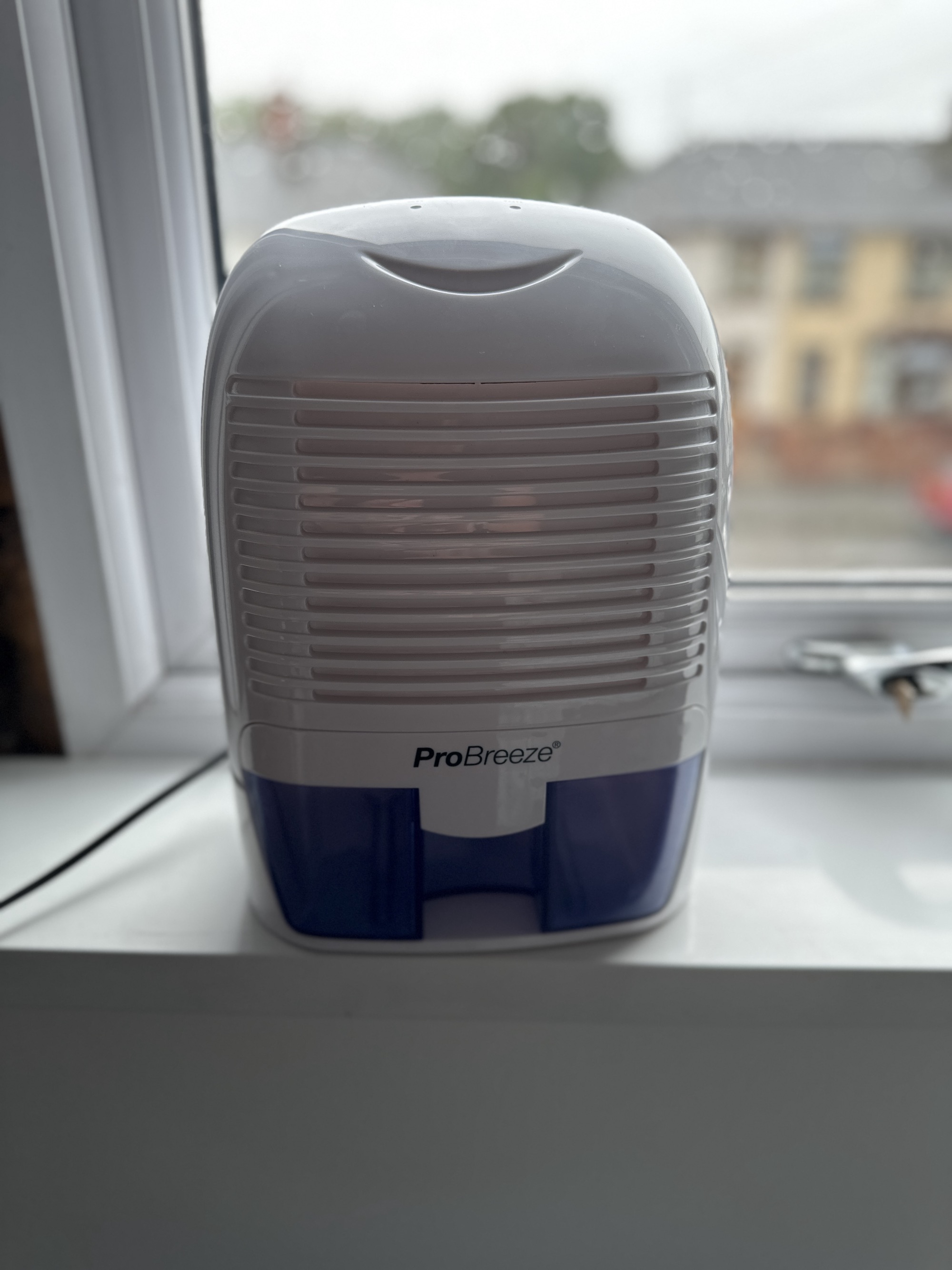
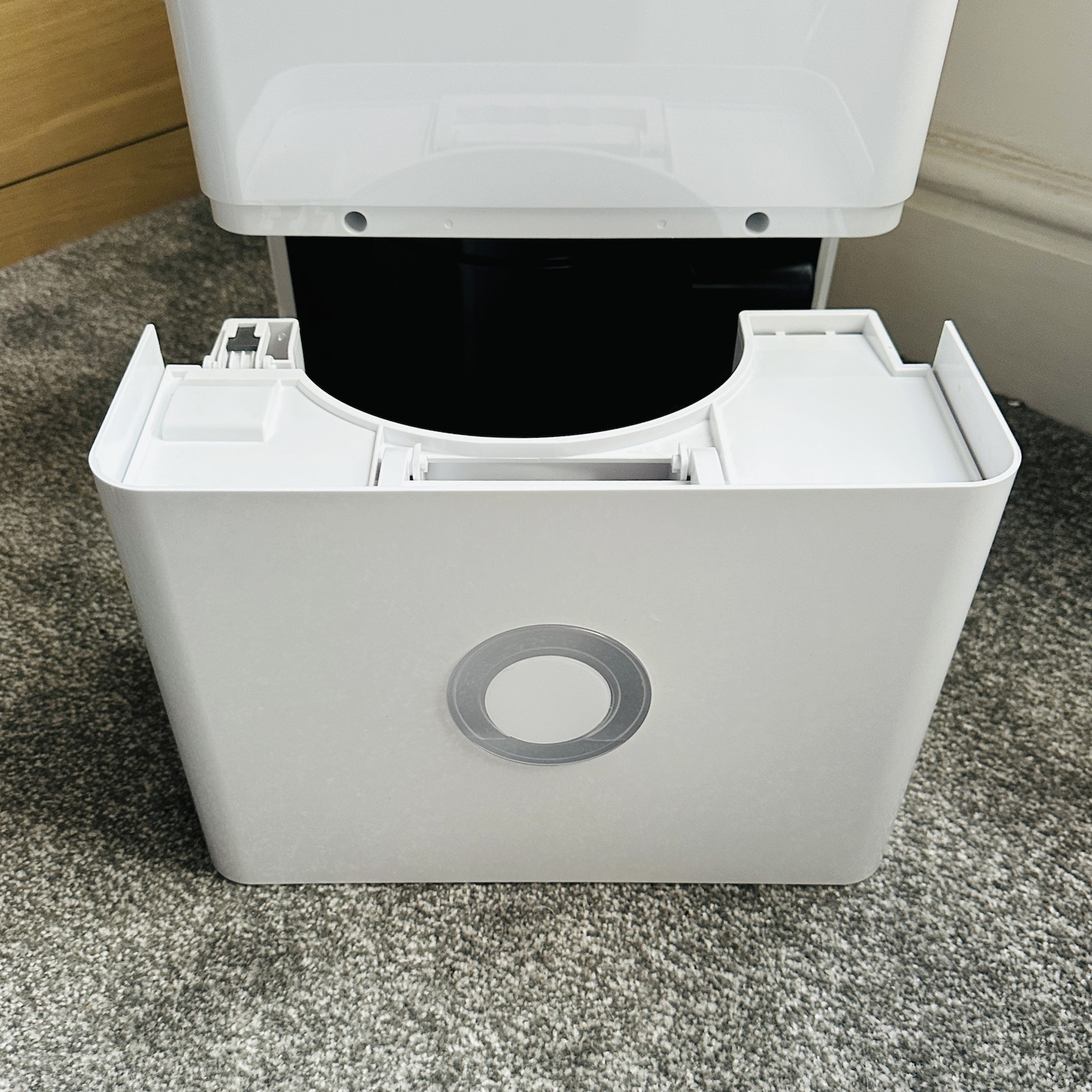

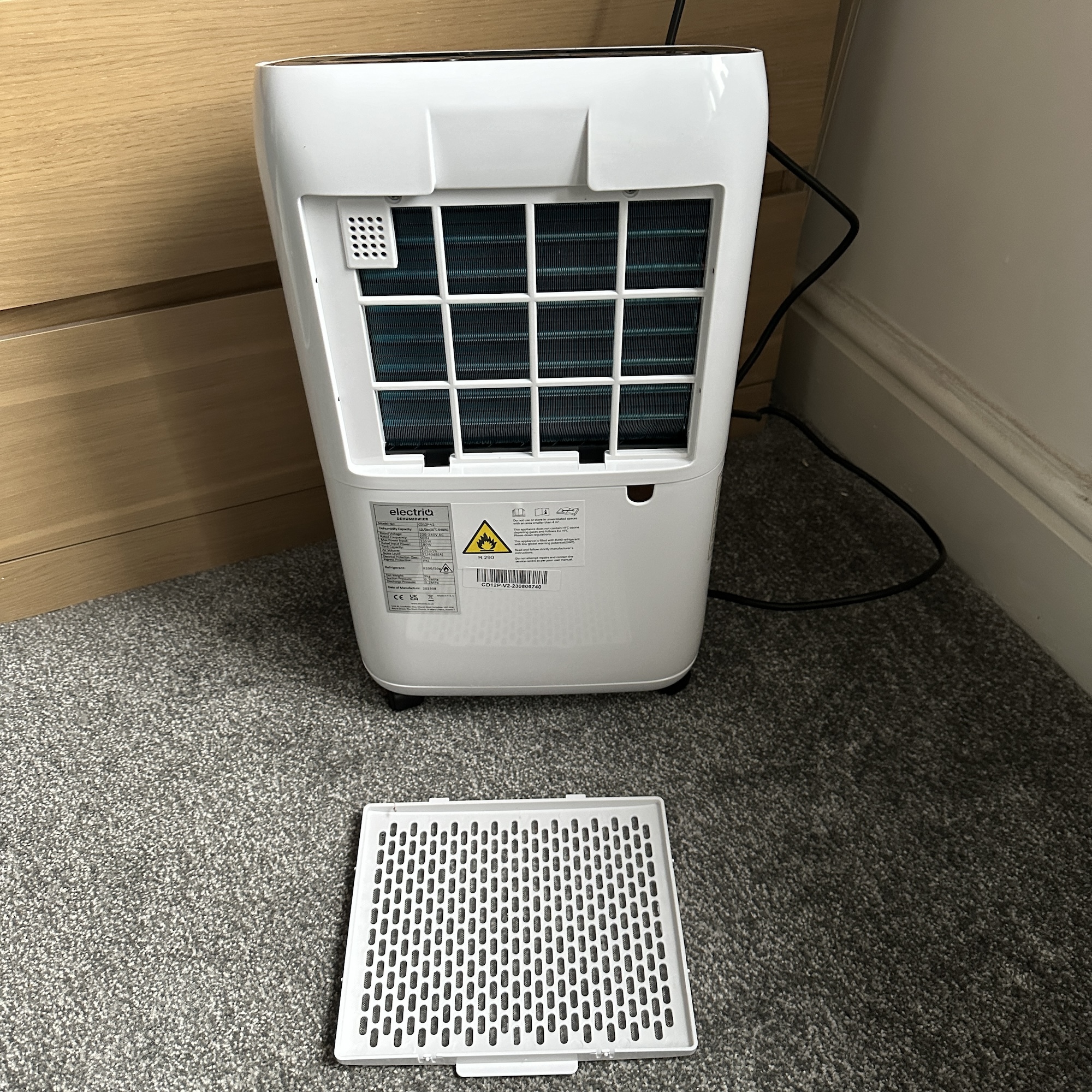
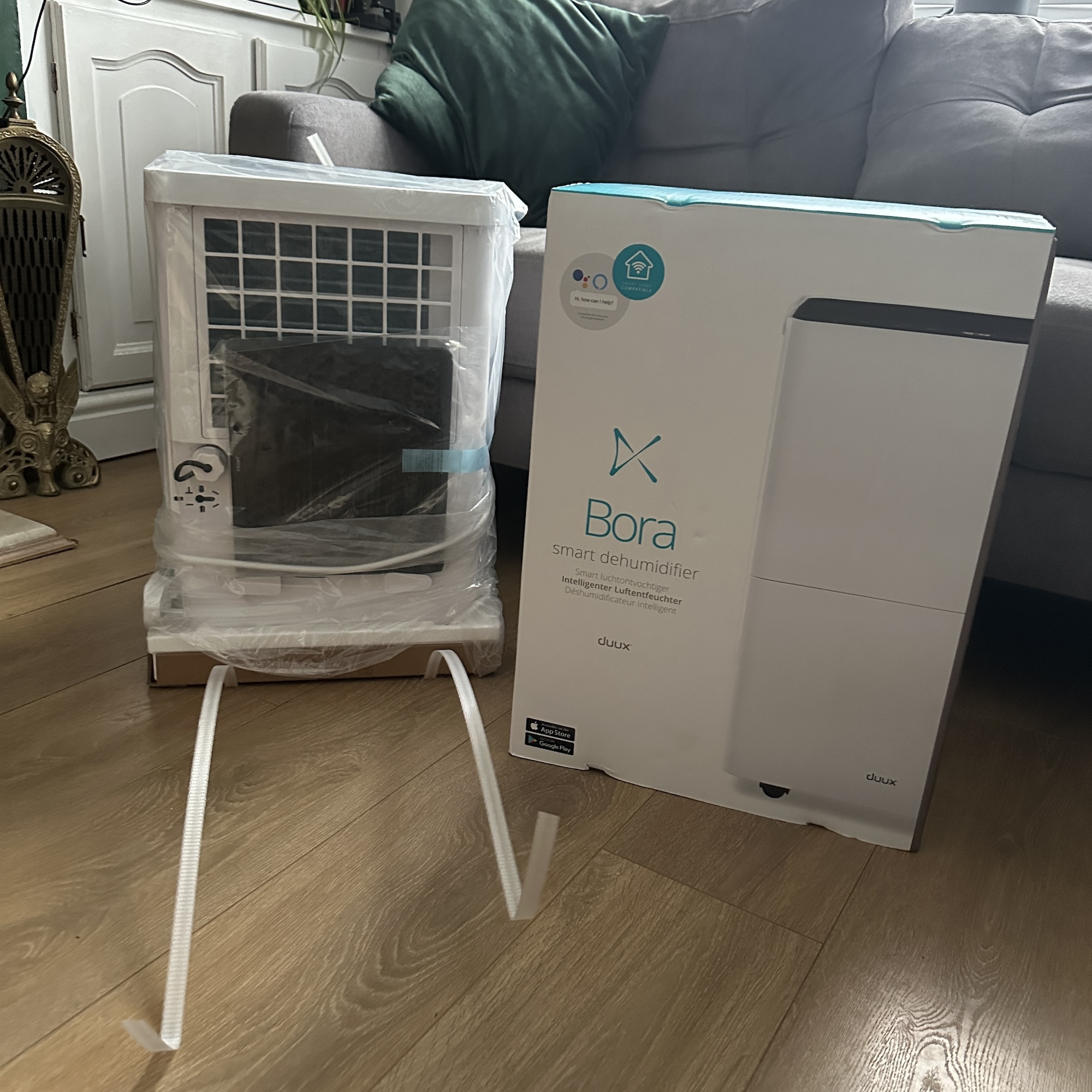
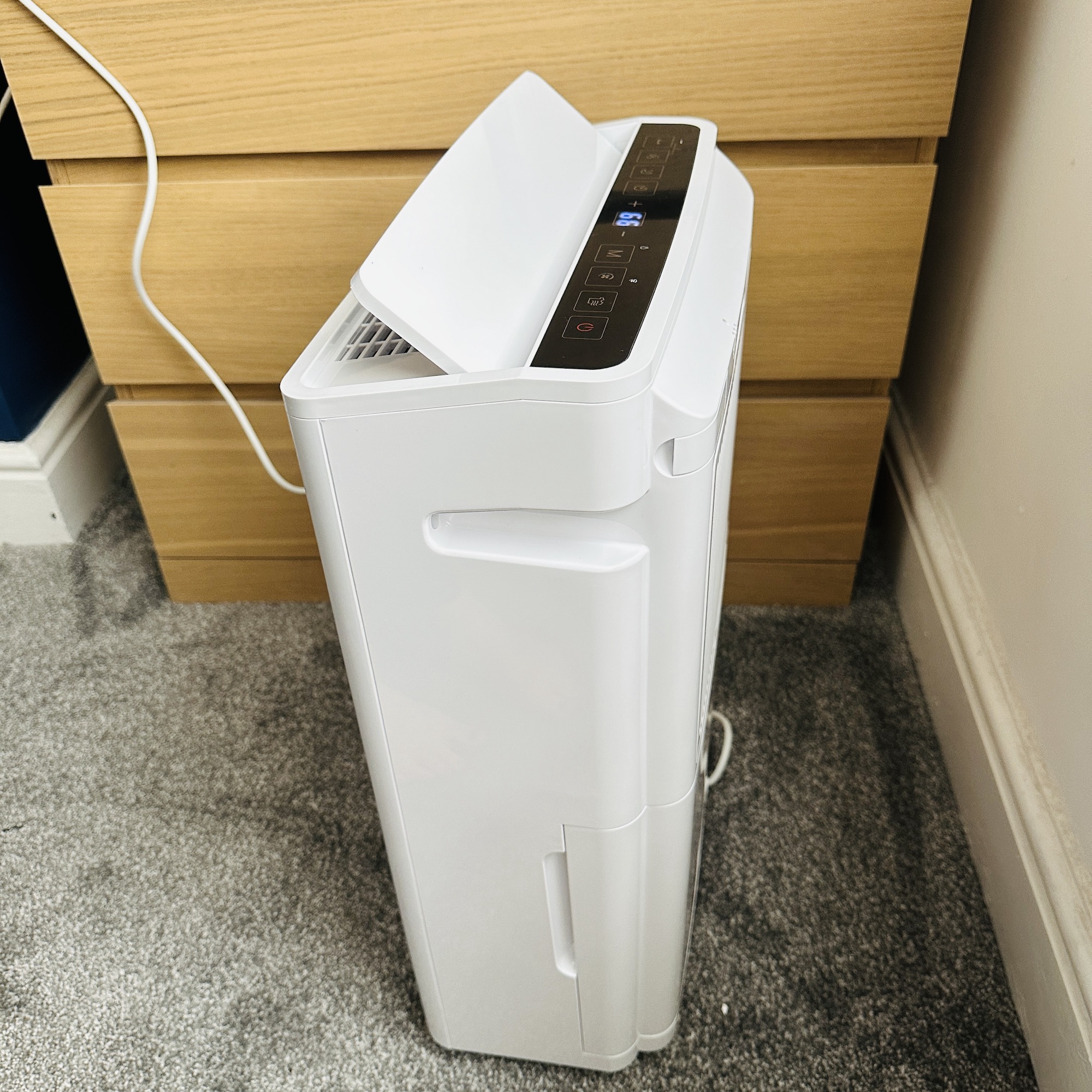
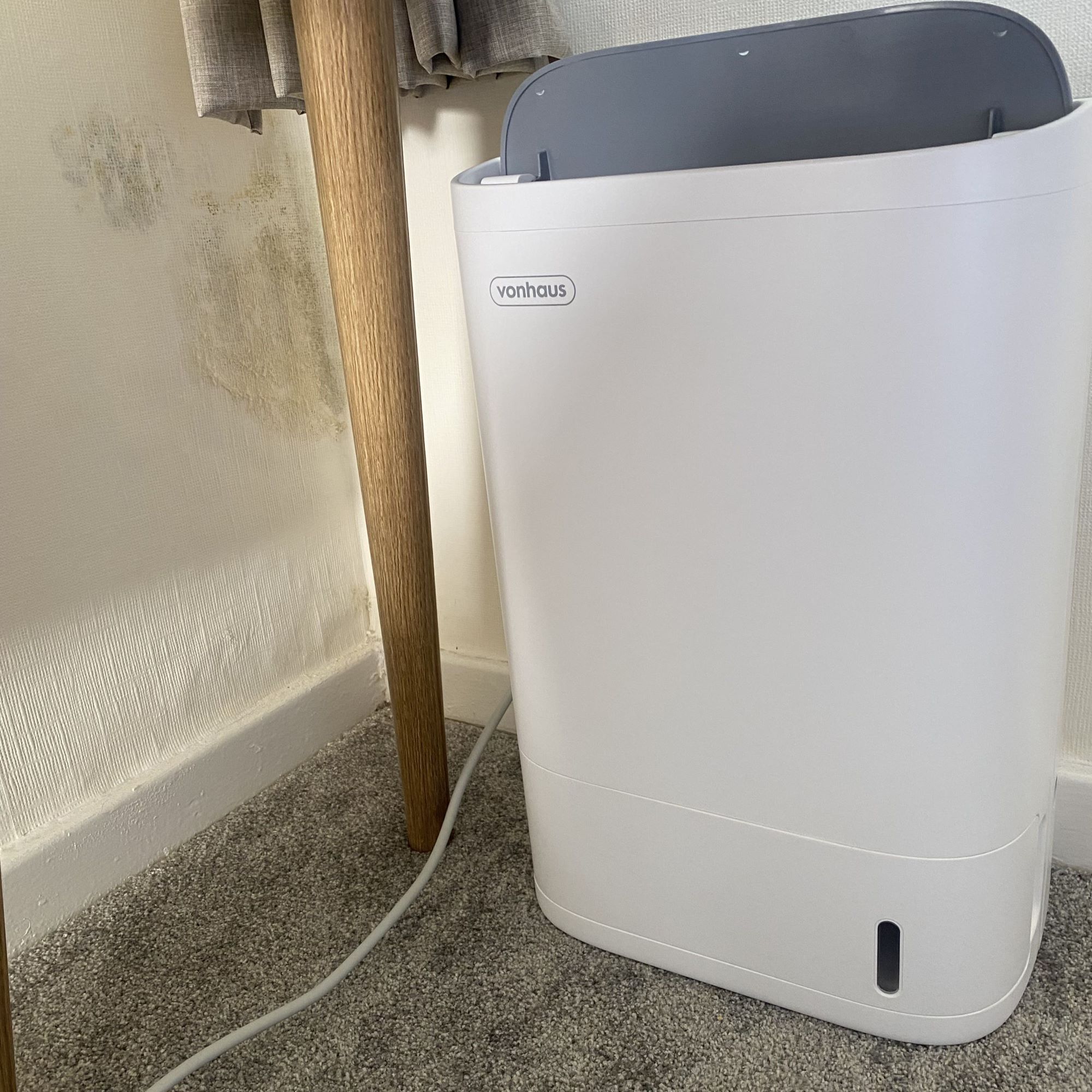








With all of this information at our disposal, we then assign the dehumidifiers a dedicated Ideal Home star rating. They are as follows:
5 stars - an impressive dehumidifier that does exactly what you expect and cannot be faulted in any way. It will also receive an Ideal Home-approved badge.
4.5 stars - a high-quality, hard-working dehumidifier, but it leaves us wishing for a bit more, so it loses that crucial half-mark. However, it will still receive an Ideal Home-approved badge.
4 stars - an impressive dehumidifier worth your money but may need some fine-tuning before it suits every customer and every home.
3 stars - a good dehumidifier that works well but doesn't blow us away with its specs or affordability. In some cases, it may also be difficult to use.
2 stars - an affordable dehumidifier that will suit the budget-conscious but is under-specced and lacks key features.
1 star - we would not recommend this dehumidifier, as it is underwhelming and does not work as well as it should.

Jenny joined the Ideal Home team as Senior Digital Editor in 2023, bringing several years of product testing experience from across sister brands Real Homes, Homes & Gardens, Livingetc and Gardeningetc.
As part of Ideal Home's commitment to how we test the products we recommend, she has tested a number of these dehumidifiers in her busy family home, assessing extraction rates, humidity control, energy-efficiency, noise levels and laundry-drying performance. The SmartAir Dry Zone stood out for its high-capacity water tank, consistent moisture removal, and efficient laundry-drying results.

Katie has been reviewing products for Ideal Home as a freelancer for the last two years, developing technical expertise in testing home and garden appliances.
She started out supporting the e-commerce team, researching the best products on the market across homes and gardens, and putting countless dehumidifiers through their paces, benchmarking them on extraction rates, energy consumption, noise levels and feature performance. She tests and reviews new models in her flat in Leeds, assessing real-world humidity control, moisture removal and day-to-day performance.

Jullia has tested a wide range of home appliances for the Ideal Home team - including vacuum cleaners, electric heaters, dehumidifiers and more, building strong technical insight across multiple categories.
She tested the impressive MeacoDry Arete Two in her home, carrying out hands-on assessments for moisture extraction, humidity control, energy efficiency and noise levels. with the best-in-class dehumidifiers.

Rachael is a freelance reviewer who helps the Ideal Home team by carrying out detailed, technical testing to identify the best-performing products for our readers.
She tested most of the dehumidifiers in this guide from her damp-prone Victorian terrace in Newport, South Wales, assessing everything from their ability to maintain stable indoor humidity to their laundry drying performance.
The best dehumidifier brands
As dehumidifiers rise in popularity, the sheer number of dehumidifiers on the market can make the buying process extremely overwhelming. So, I’ve compiled this quick list of dehumidifier brands that I’d recommend after years of testing. This includes budget-friendly brands known for producing all kinds of appliances to dehumidifier-specific brands that often have a slightly larger price tag.
- Meaco (£-££): Renowned manufacturer of dehumidifiers, including the Meaco Arete Two
- Pro Breeze (£-££): A wide selection of dehumidifiers to suit every price point
- Vonhaus (£-££): A small selection of affordable dehumidifiers with capacities of up to 20L
- Silentnight (£-££): Extremely affordable dehumidifiers often available at Amazon
- EcoAir (££-£££): Slightly pricier desiccant dehumidifiers in various sizes for different homes
- De'Longhi (££-£££): A small range of Italian-made dehumidifiers that are also incredibly stylish
- Duux (££-£££): High-quality, smart dehumidifiers at a higher price point
How to choose the best dehumidifier
Finding the best dehumidifier for your home depends a lot on the type of moisture issue you're trying to solve, so it's always worth speaking with the customer service department of the manufacturer you're hoping to buy from to ensure you have the right model for your needs. You can also check out our detailed guide on how to choose a dehumidifier for all of the information you could need.
However, to help give an overview, it's worth considering the following:
- The different types of dehumidifiers: Compressor, desiccant, and Peltier. Many experts agree that desiccant dehumidifiers are better.
- Extraction rate: The higher the extraction rate, the more powerful the machine will be. Knowing what size dehumidifier you need can help you choose the right option for you.
- Water tank capacity: How much water the water tank of the dehumidifier can hold before it needs emptying.
- Noise levels: Most dehumidifiers will fall between 35 and 45dB, but check the specs to be sure to ensure your dehumidifier continues to help you sleep better.
- Energy rate: Measured in watts, the average household model uses around 200-500W while running, and to calculate a dehumidifier's running costs, you divide the wattage by 1000 to convert into kWh, then multiply by the hours used and your electricity unit rate.
- Other features: Specific modes, smart functionality, auto sensors, etc.
When considering the above, it's also worth keeping a desired budget in mind so you don't end up spending more than you'd like to.
FAQs
Do I need a dehumidifier?
If you're wondering how to get rid of mould in a poorly ventilated room or trying to combat excess moisture or humidity inside the home, then a dehumidifier can be a useful tool in your arsenal.
That's because excess moisture within the home can come from drying clothes indoors, cooking fumes from pans and kettles, bathing and showering, and the damp British weather. However, if your home doesn't have adequate ventilation, or it's winter and you don't want to open windows to avoid letting your heating escape, then a dehumidifier can help you to keep indoor moisture levels in check.
Does a dehumidifier use a lot of electricity?
You can find out more about how much electricity a dehumidifier will use in our guide to 'how much does it cost to run a dehumidifier?'
However, the easiest way to find out how much electricity an appliance uses is to look at its wattage. The higher the number of watts a dehumidifier requires, the more electricity it will use and the more expensive the running costs will be.
Do dehumidifiers help to dry clothes?
Yes, a dehumidifier will help to dry clothes indoors. That's because a dehumidifier sucks up the moisture that wet washing releases as it dries, therefore helping to speed up drying times. In fact, when it comes to the heated airer vs dehumidifier debate, a dehumidifier with a good laundry drying function can give one of the best heated clothes airers a run for its money when it comes to drying wet washing fast.
However, you do need to opt for a dehumidifier with a good extraction rate if you want to use it to dry washing. Our top choices are the MeacoDry Arete Two Dehumidifier range, which offers models with a 10, 12, 20 or 25L extraction rate, the De'Longhi Tascuigo AriaDry Multi Dehumidifier, or the Pro Breeze Premium 20L Dehumidifier with Special Laundry Mode.
Is it worth buying an expensive dehumidifier?
Based on our testing of a range of dehumidifiers of different price points, we would say yes, it is worth spending as much as you can on a dehumidifier.
That's because you ideally need a dehumidifier with a high extraction rate. The cheapest and smallest dehumidifiers on the market can often only extract 0.5L of water from the air per day – in many cases, even less – but larger and more powerful dehumidifiers can extract up to 25L per day, which can make a huge difference to your home's health if you struggle with damp issues and condensation. The downside is that the more powerful a dehumidifier is, the more you will pay.
Sign up to our newsletter for style inspiration, real homes, project and garden advice and shopping know-how

Jenny is Senior Digital Editor and joined the team in 2021, working across Ideal Home, Real Homes, Homes & Gardens, Livingetc and Gardeningetc. Since getting on the property ladder, her passion for interior design and gardening has taken on a new lease of life. She loves collecting and salvaging unique items (much to her other half's despair) but sniffing out stylish home bargains is her one true love.
- Lauren BradburyContent Editor (House Manual)
- Amy LockwoodSleep Editor

